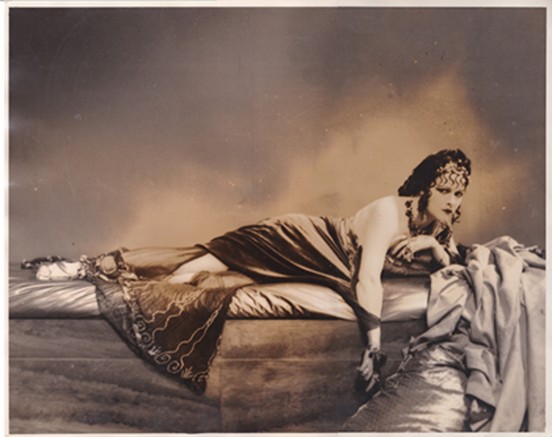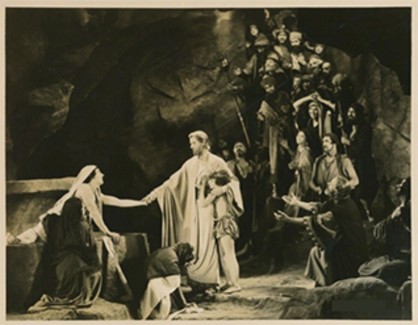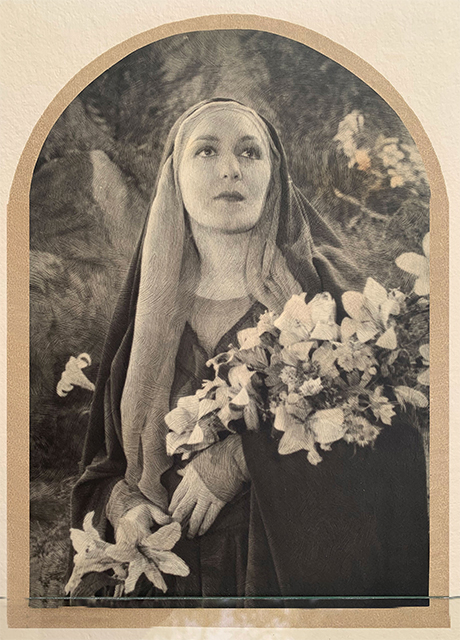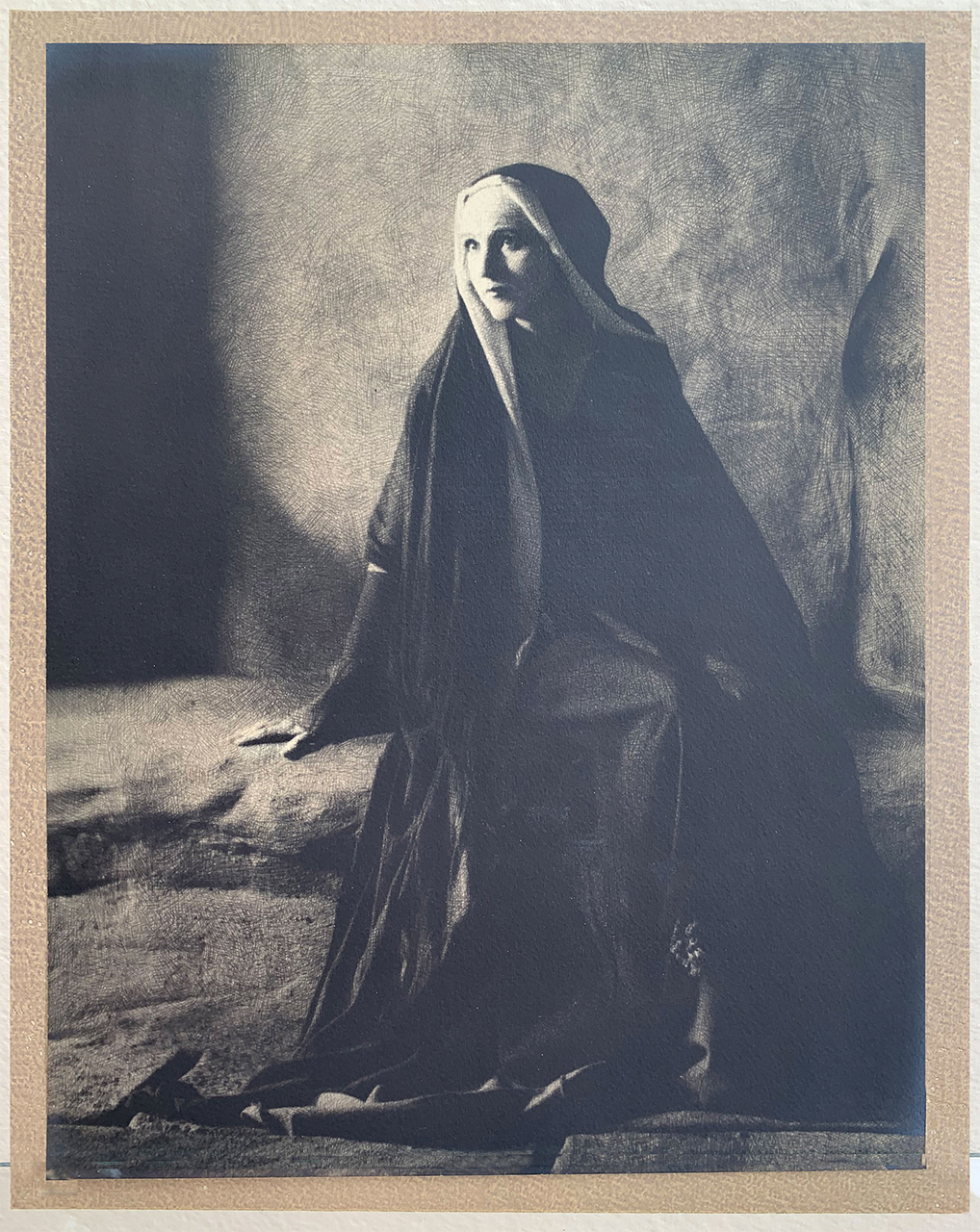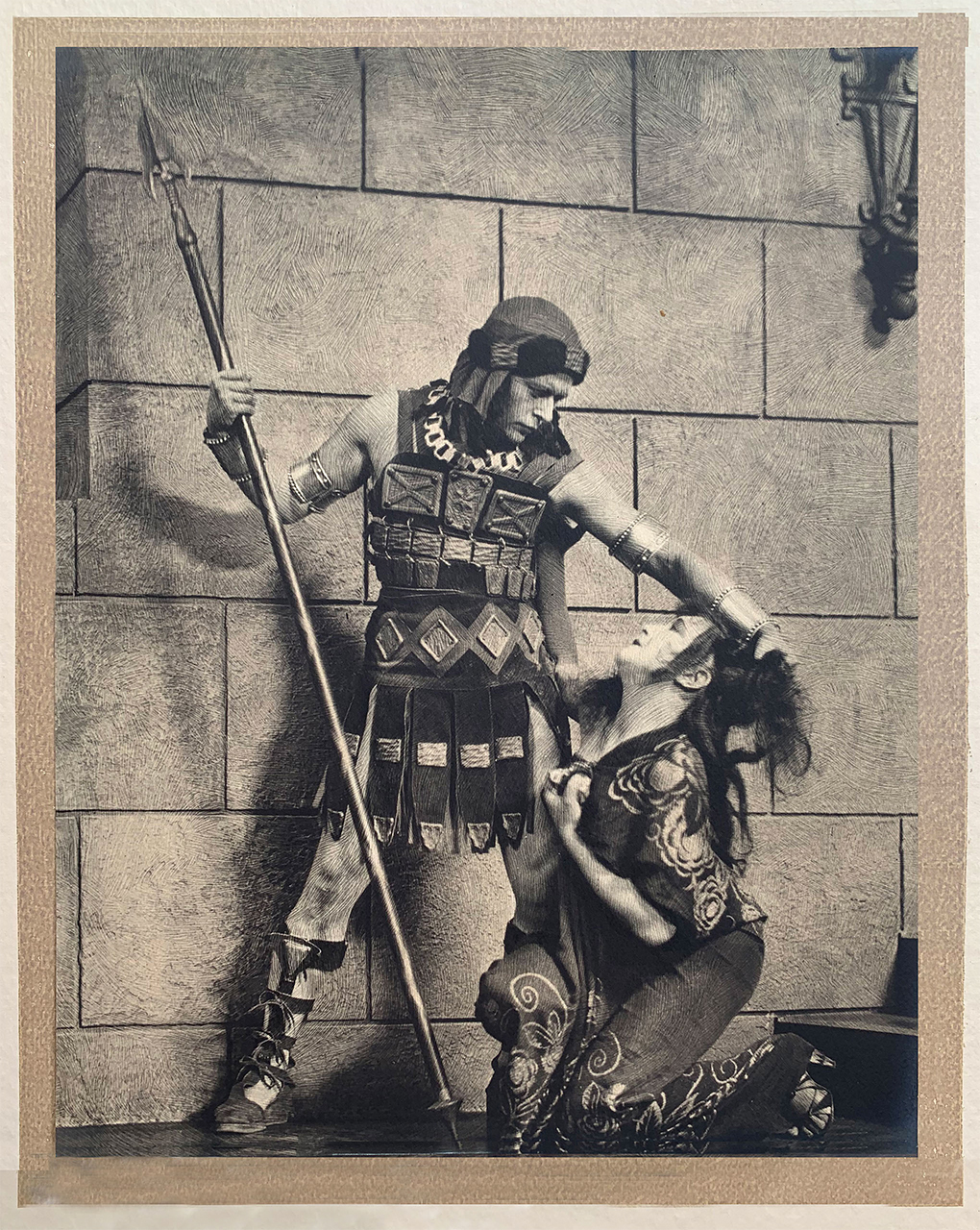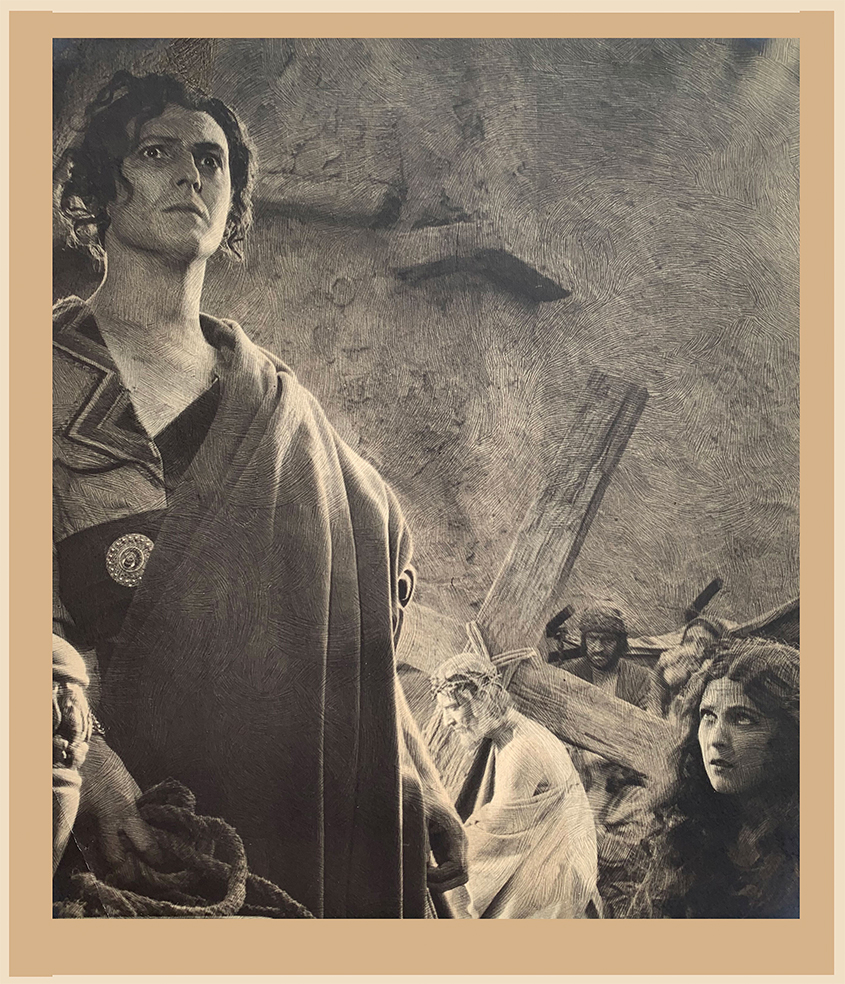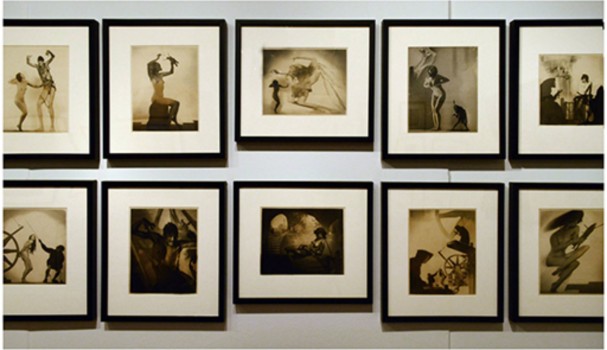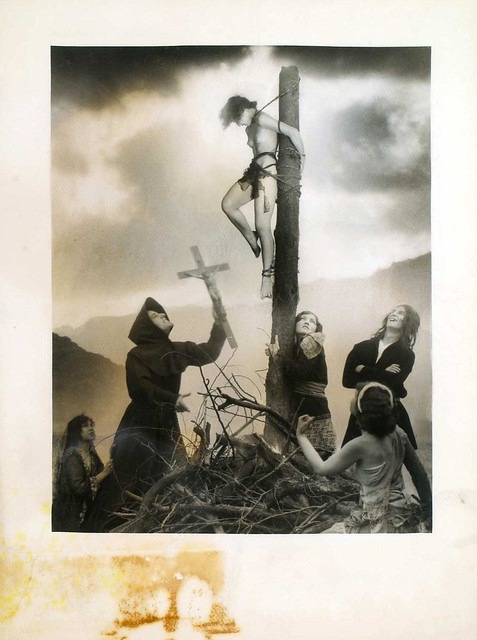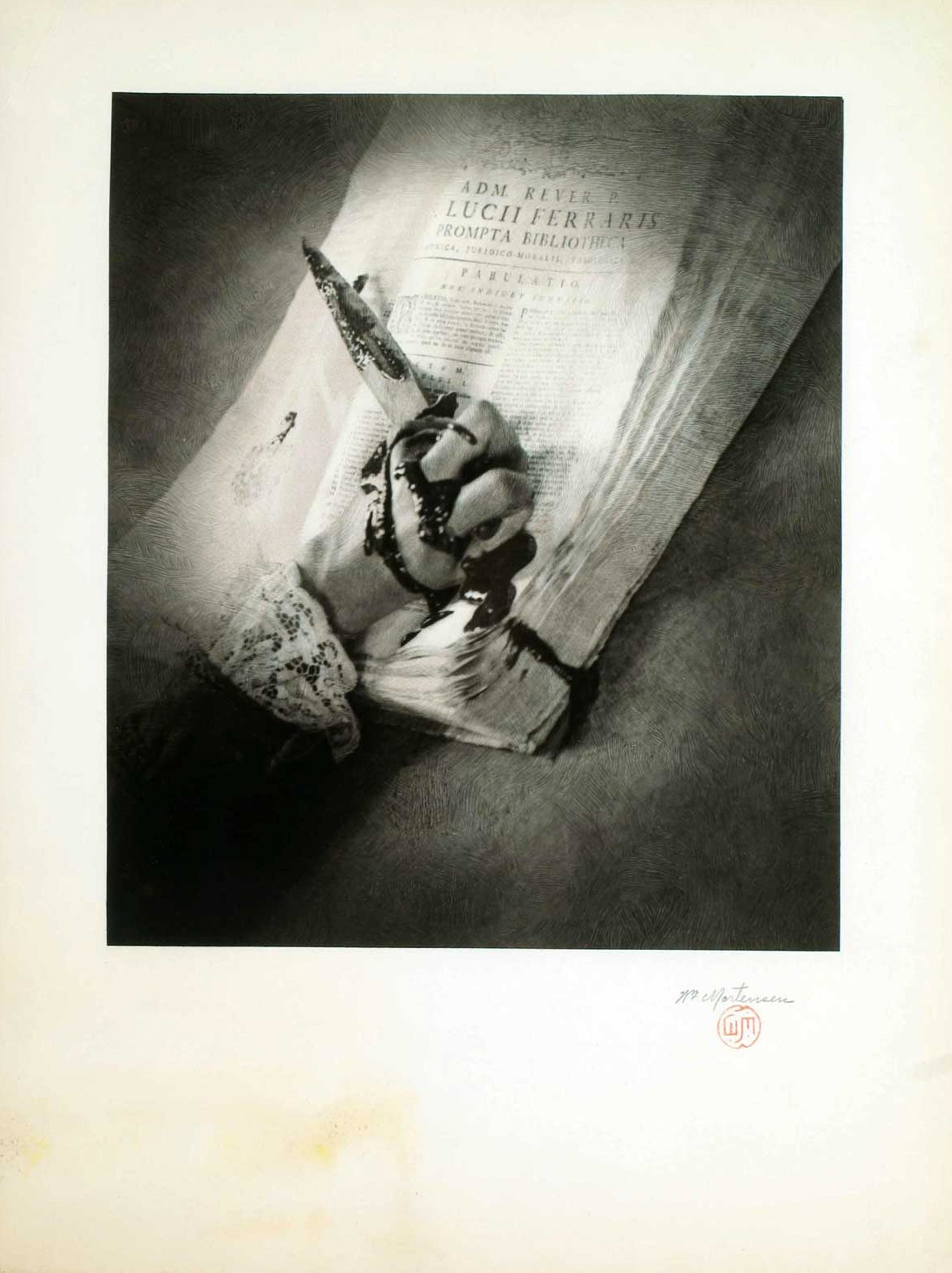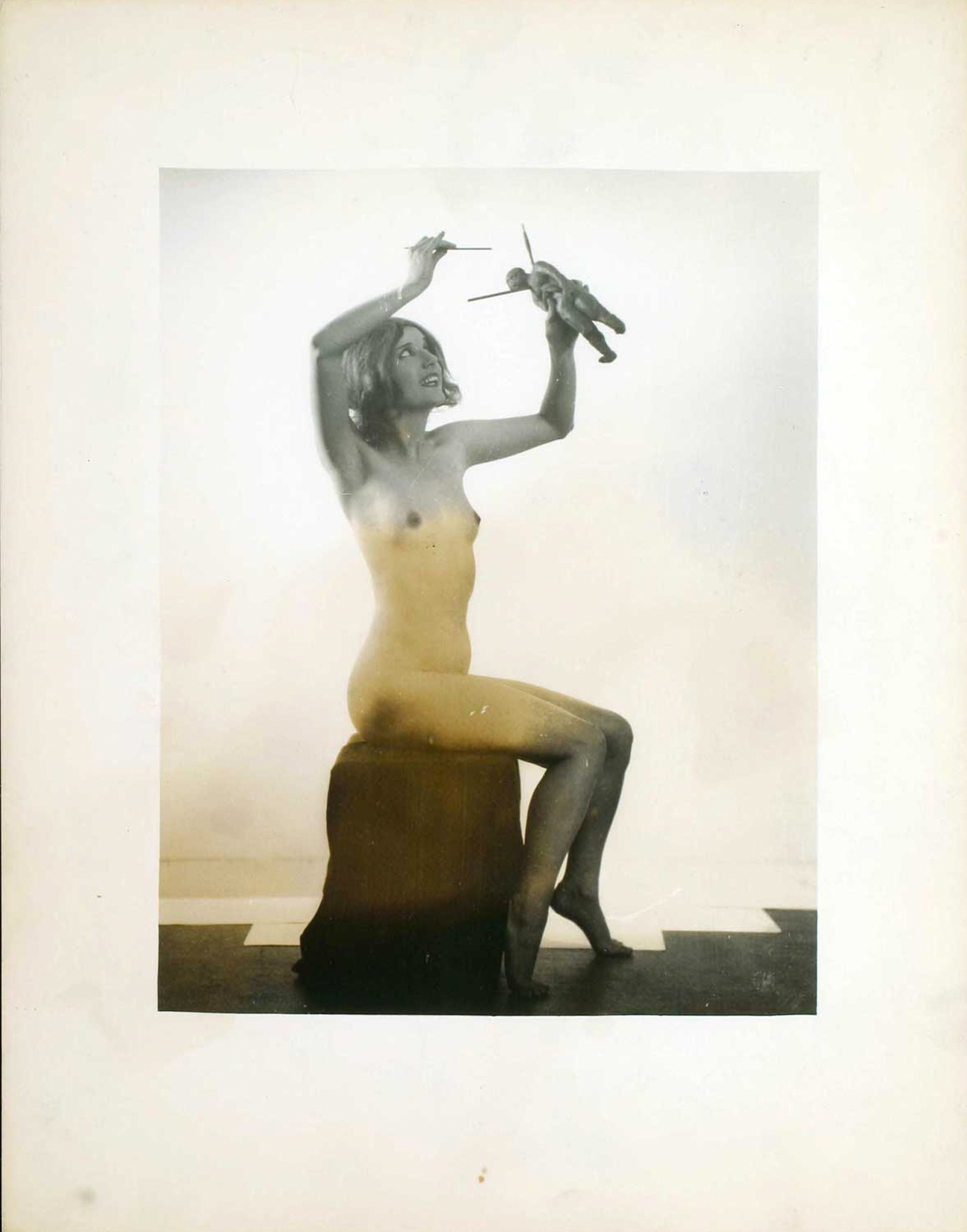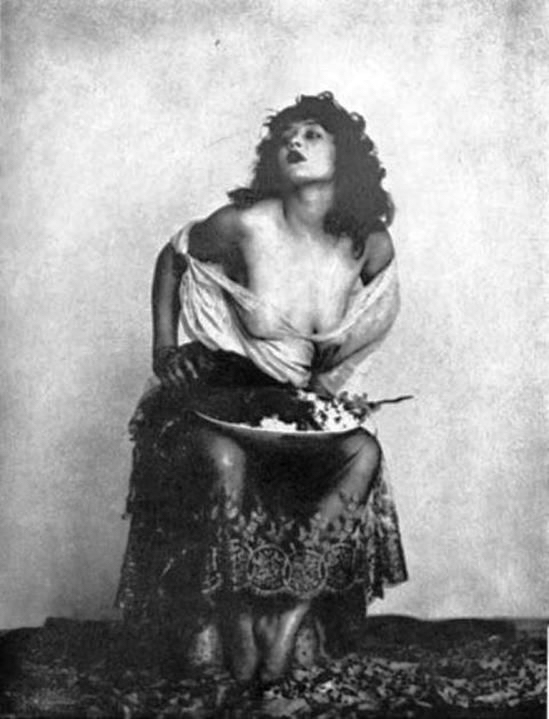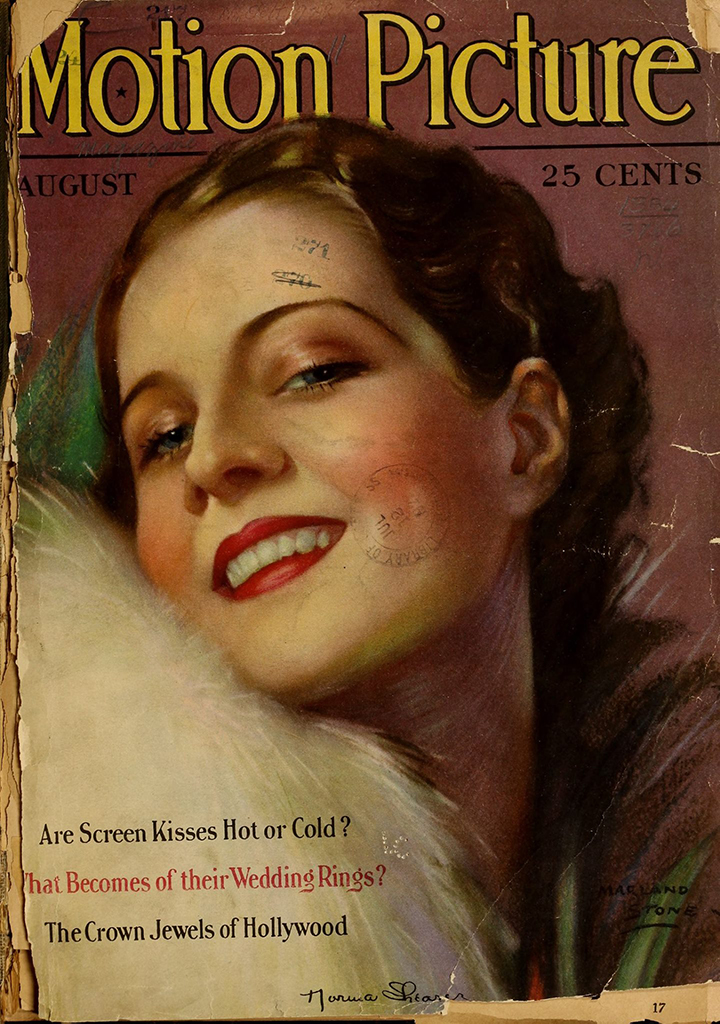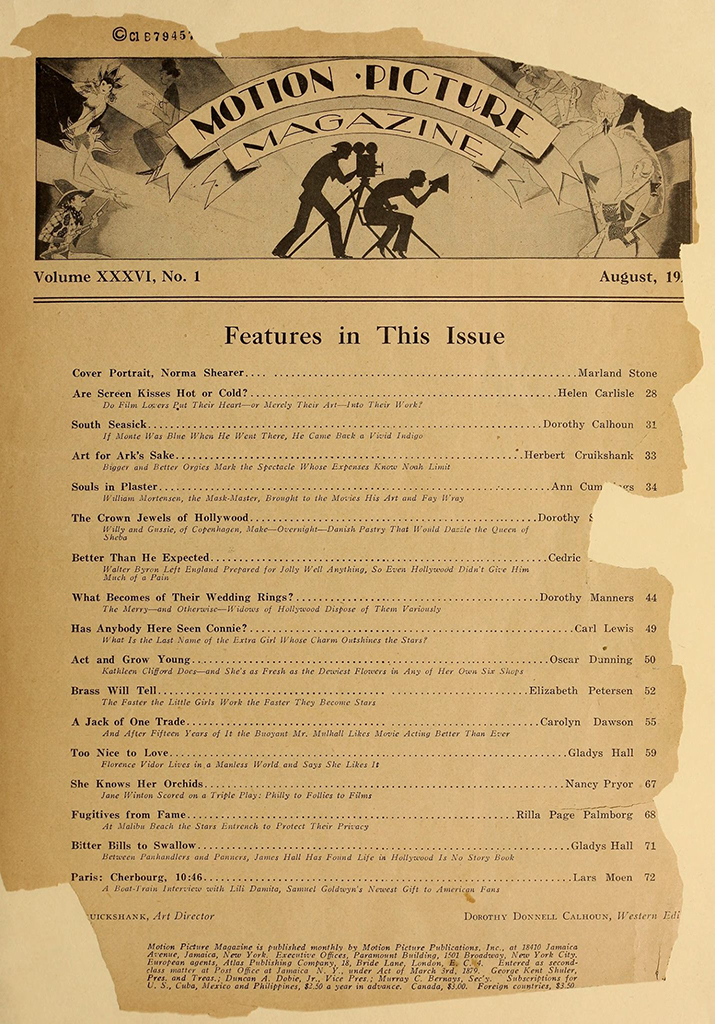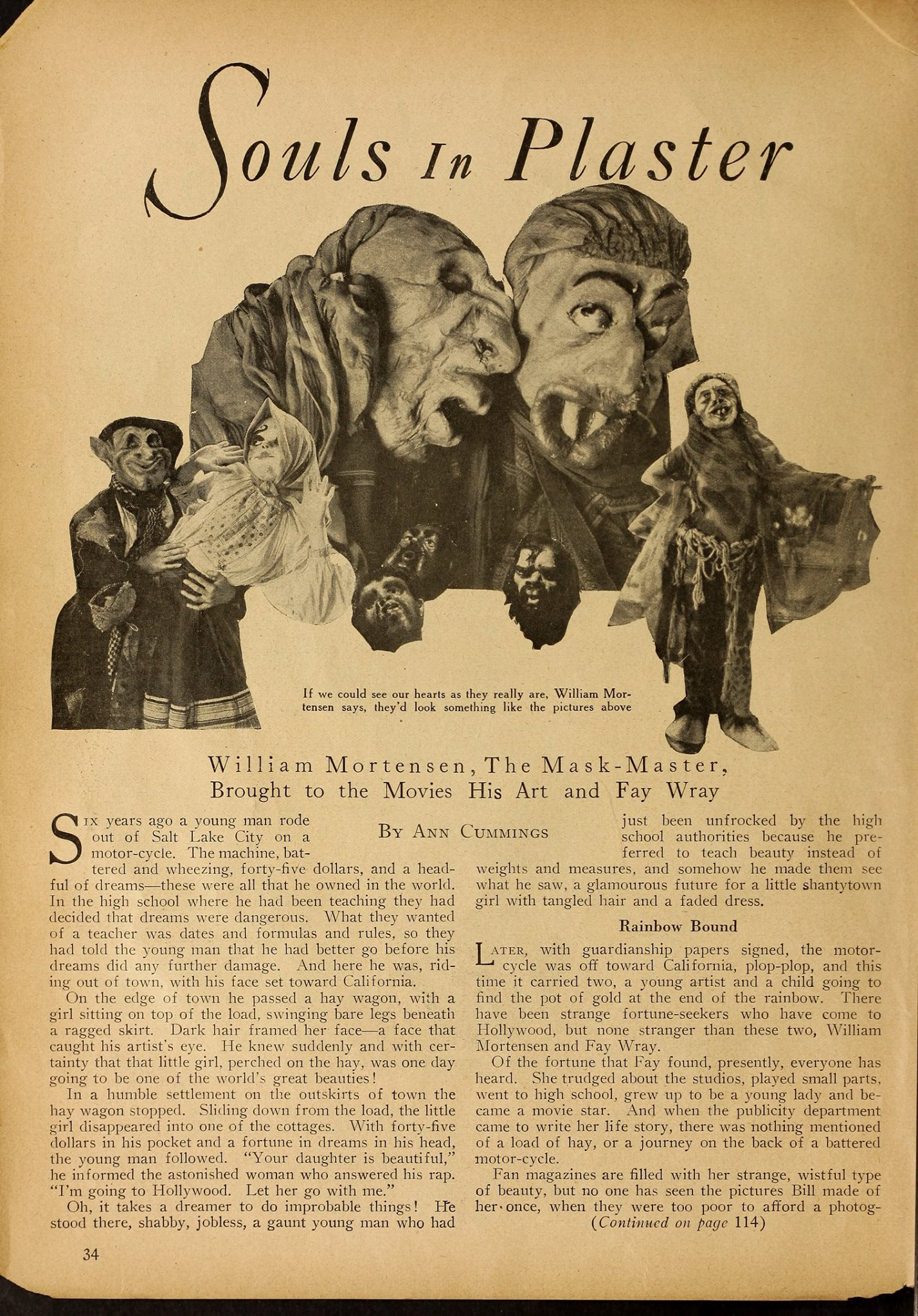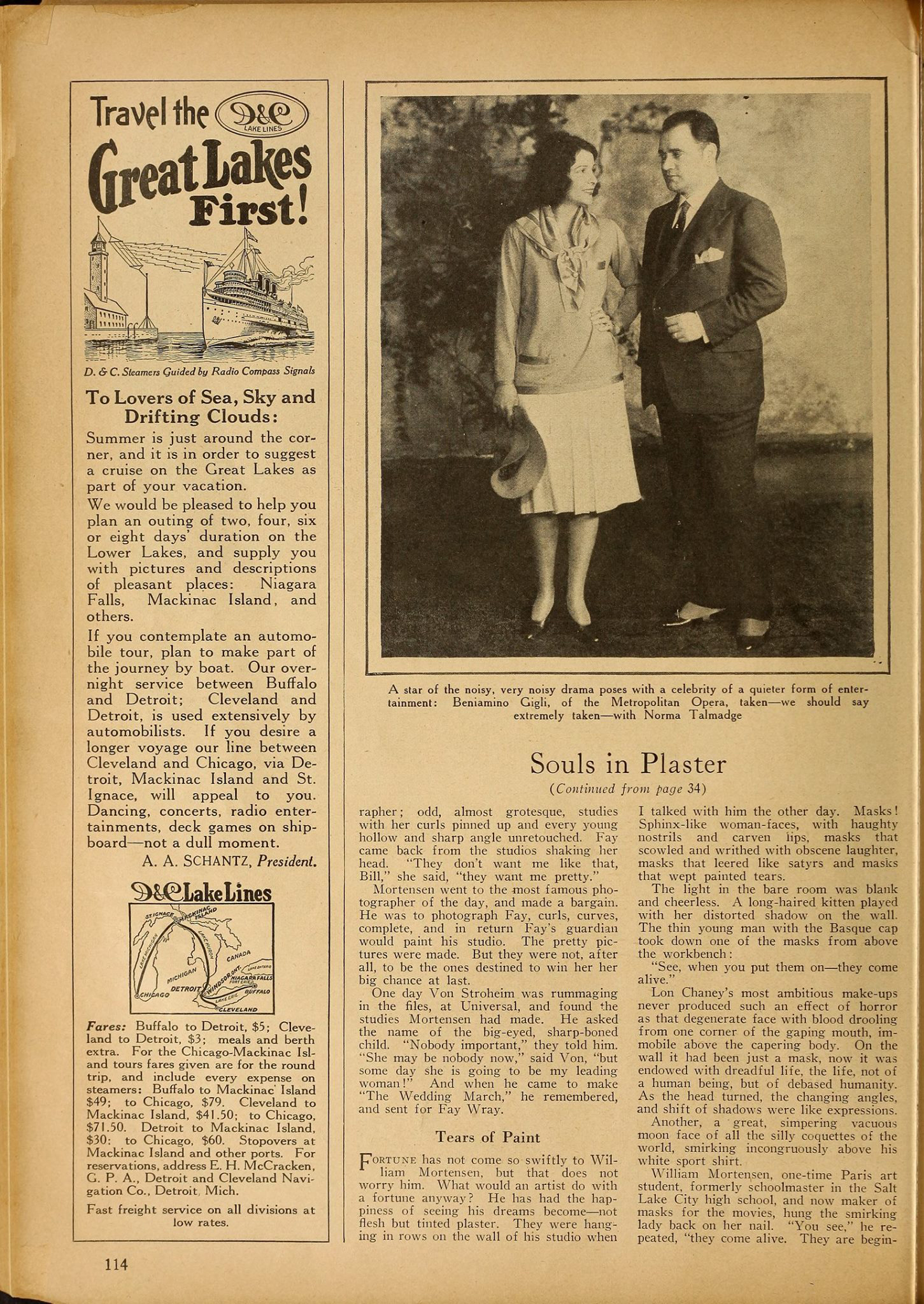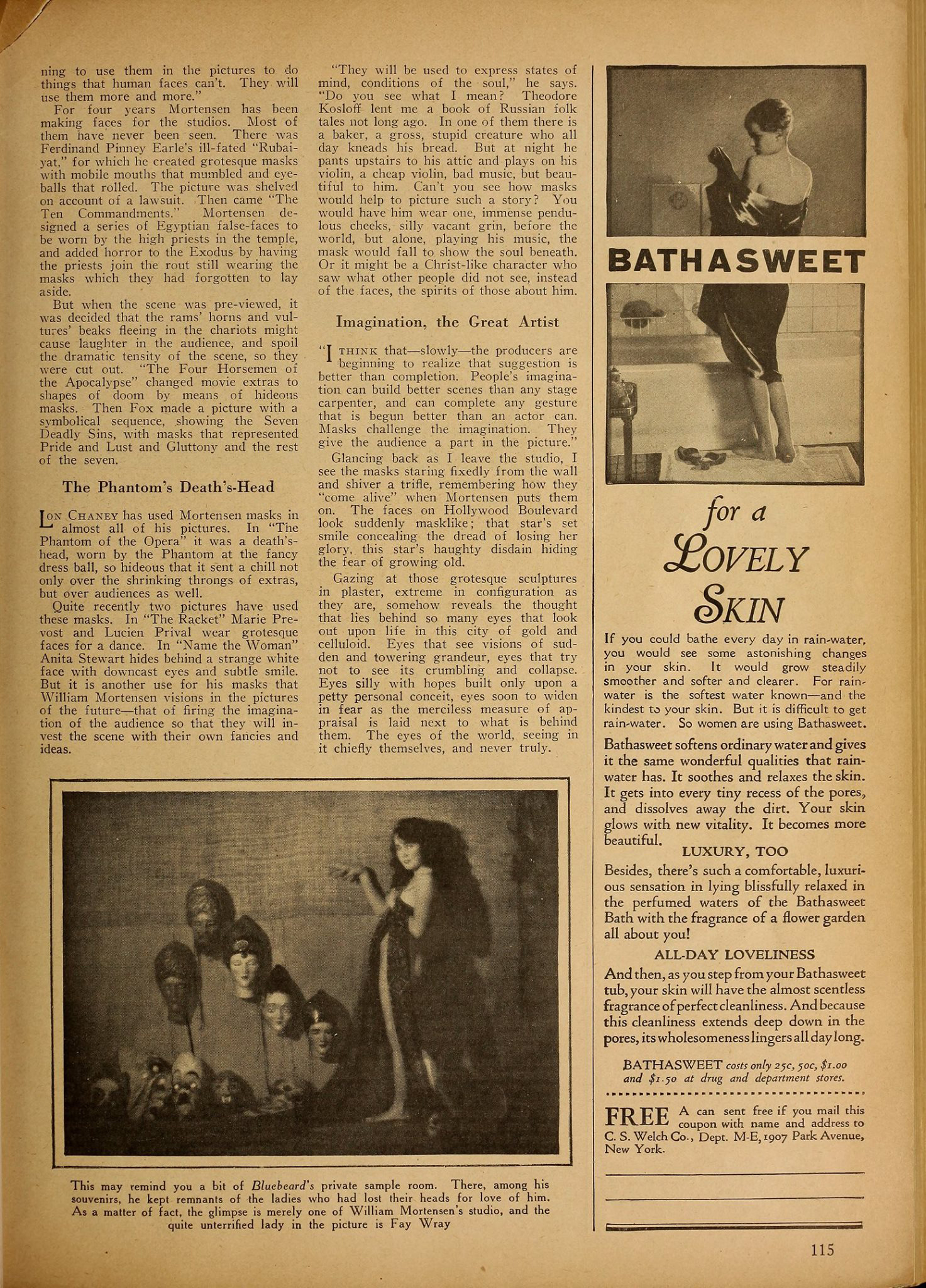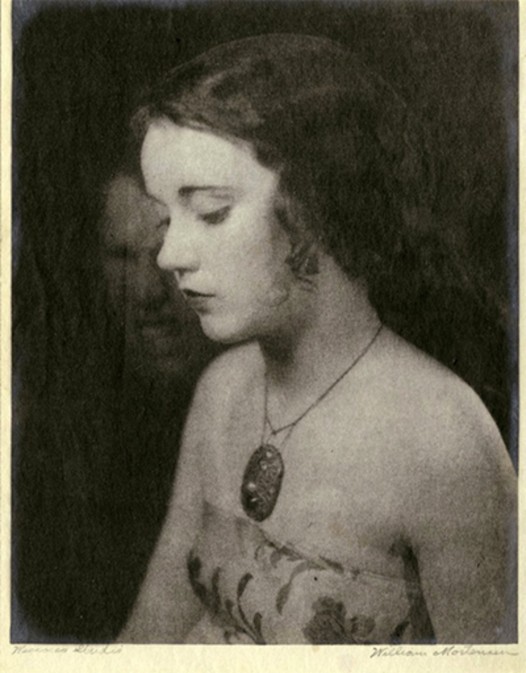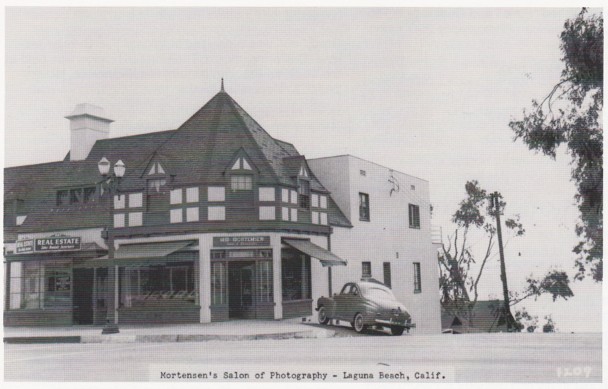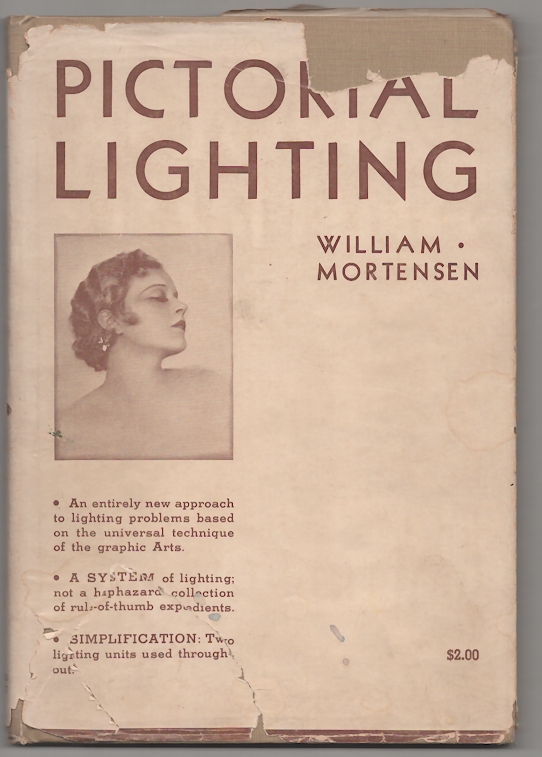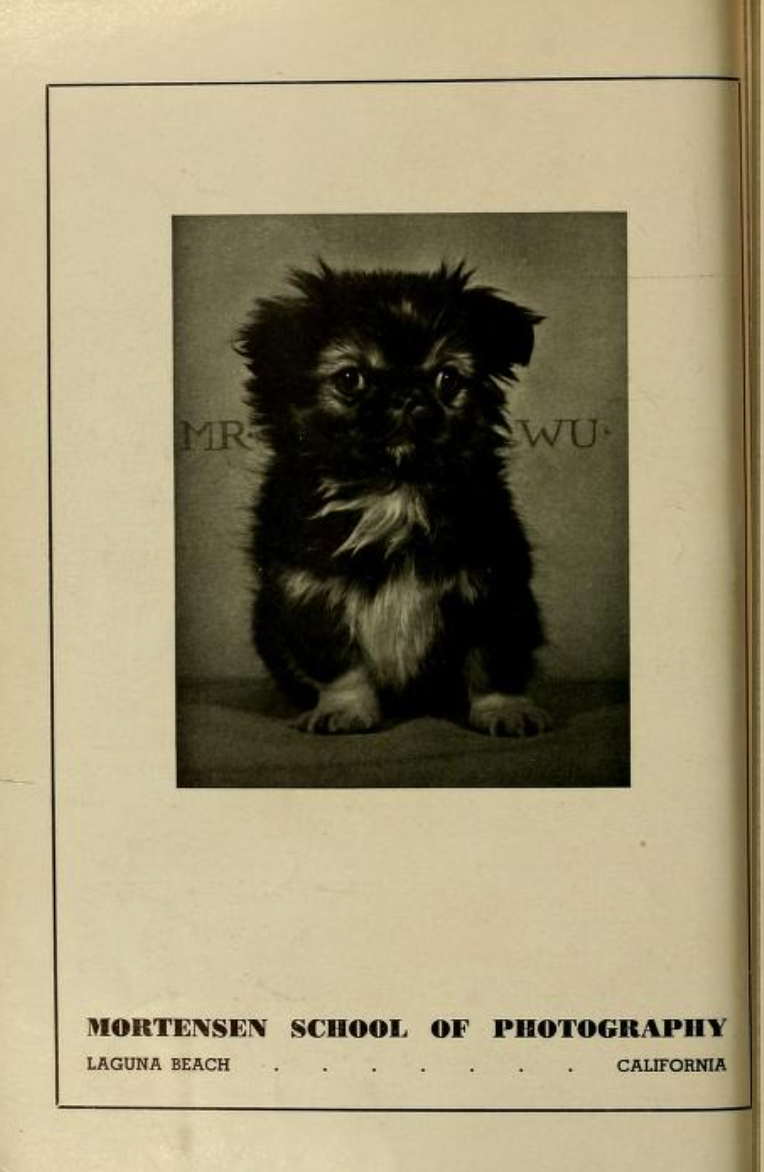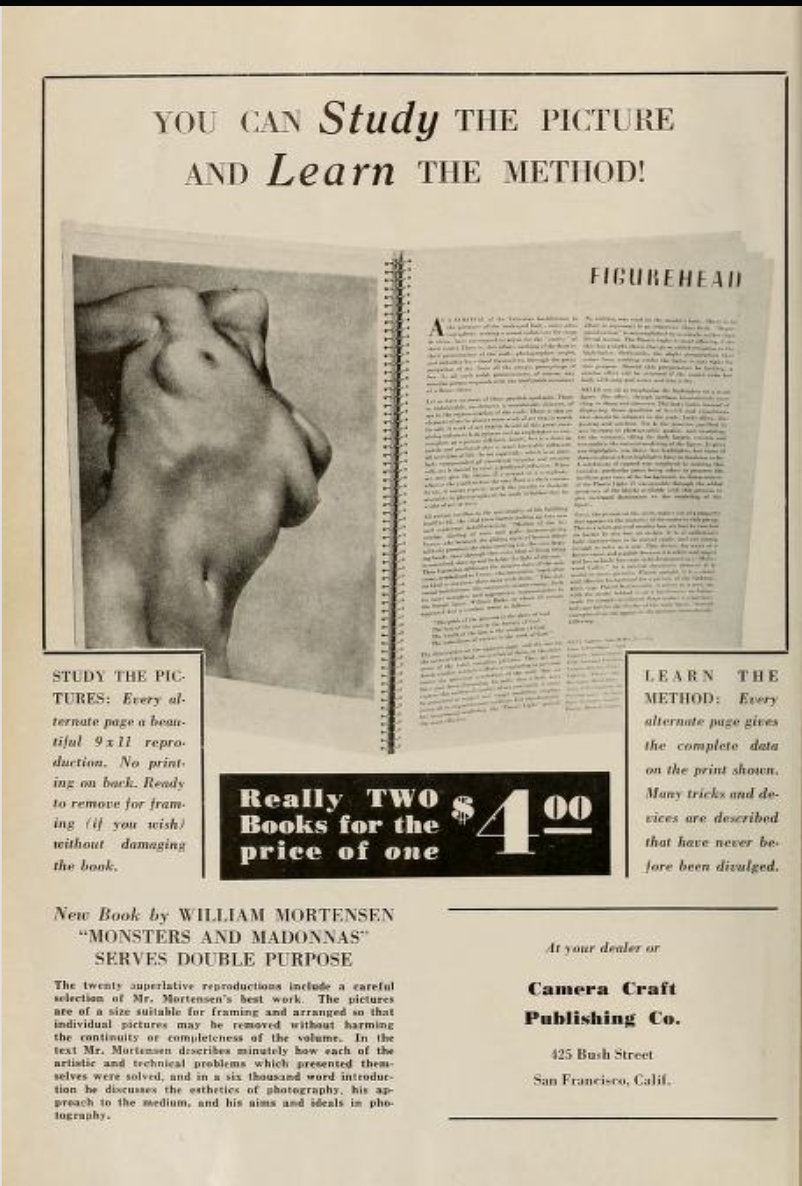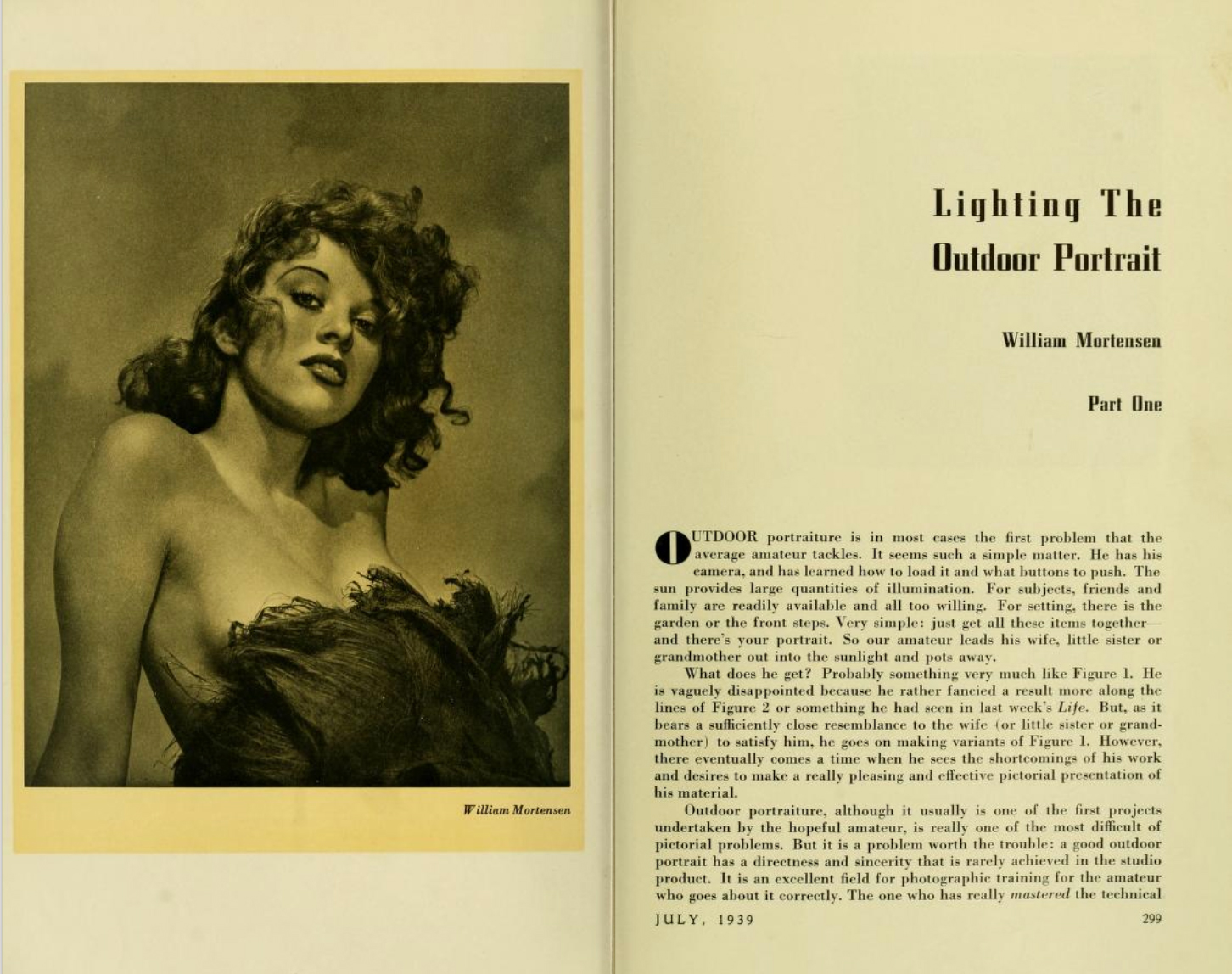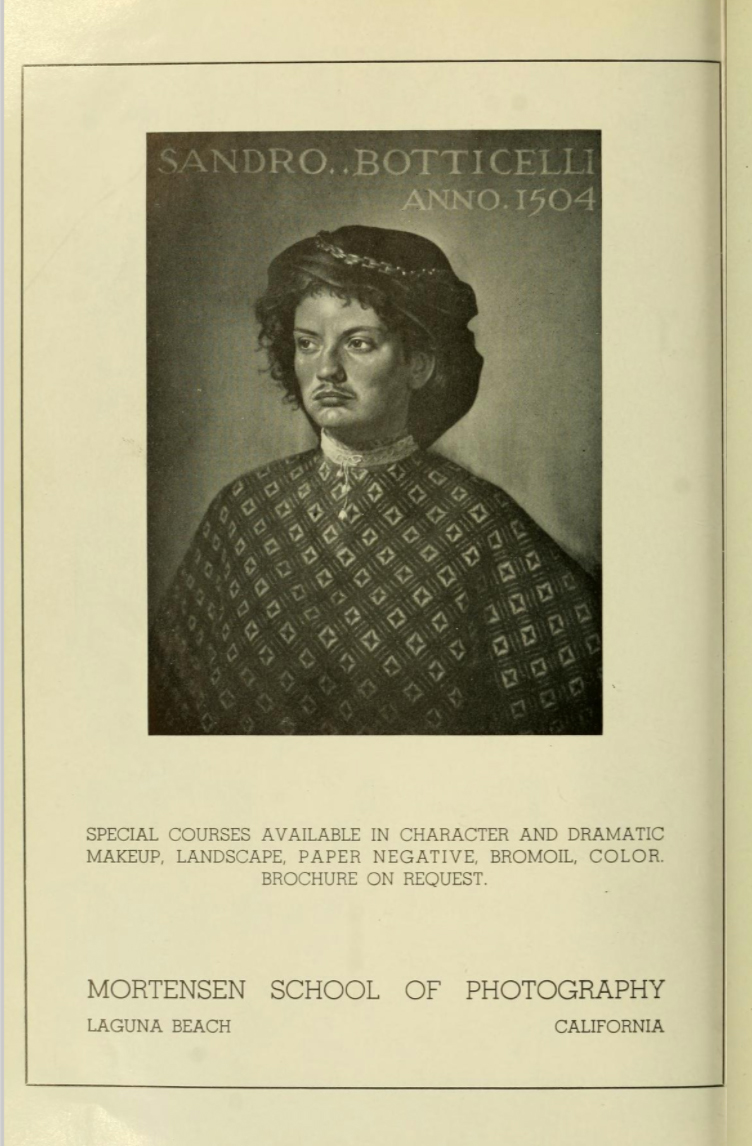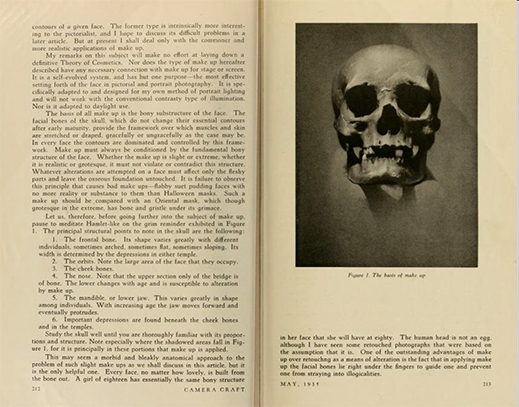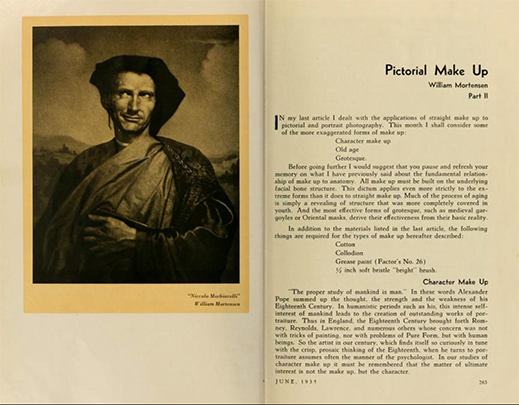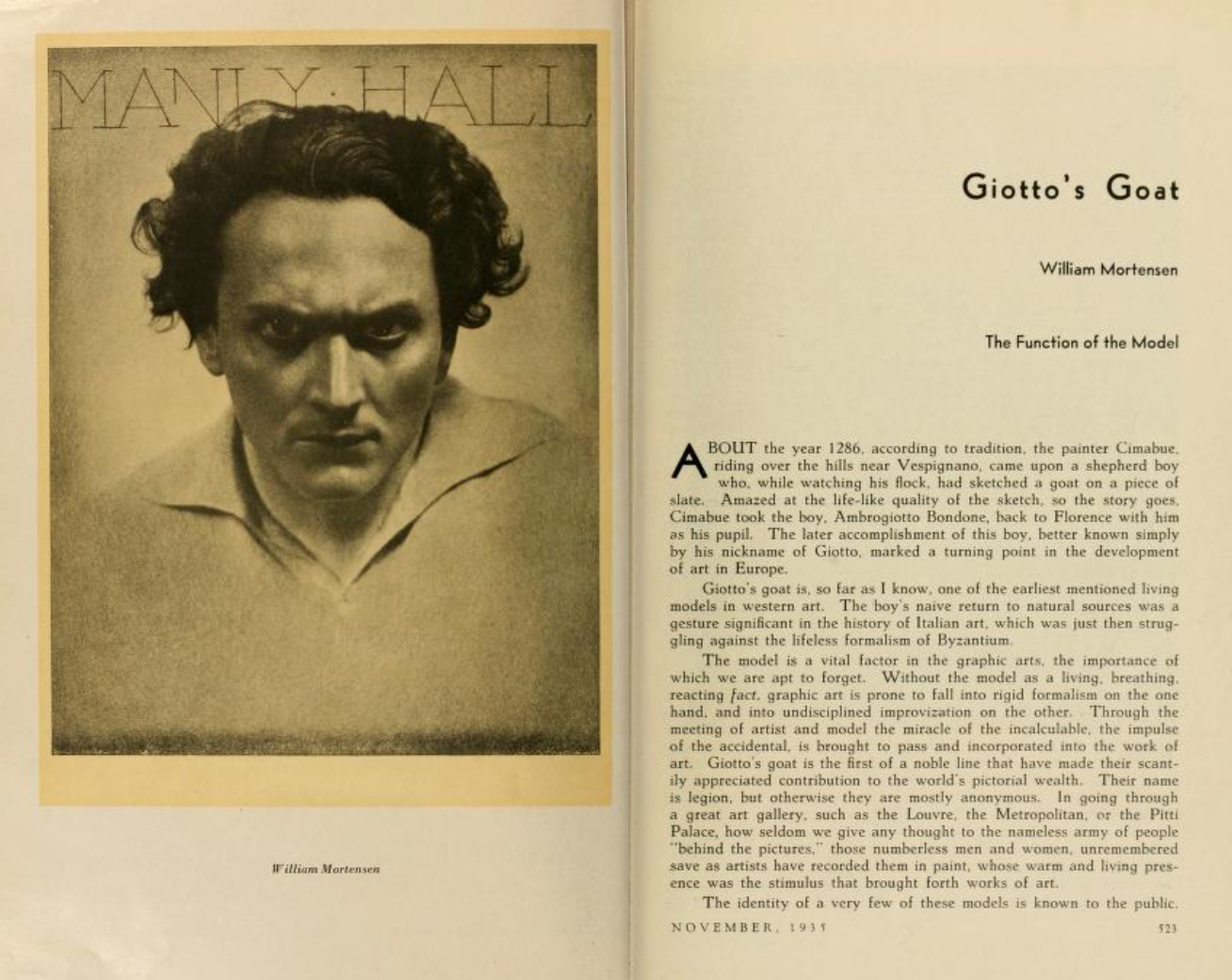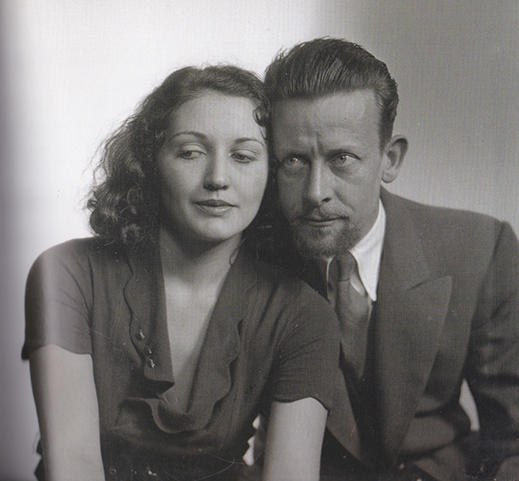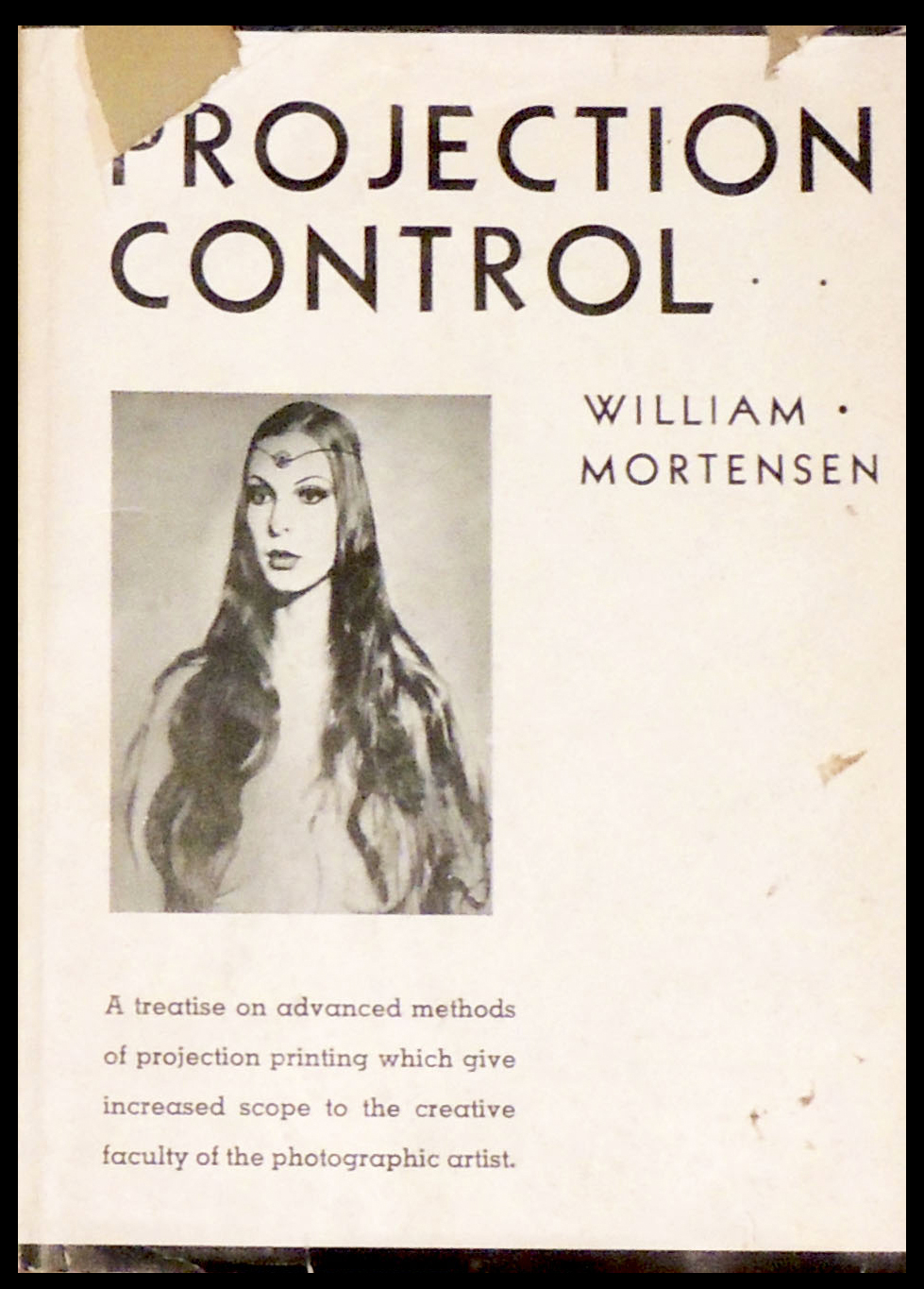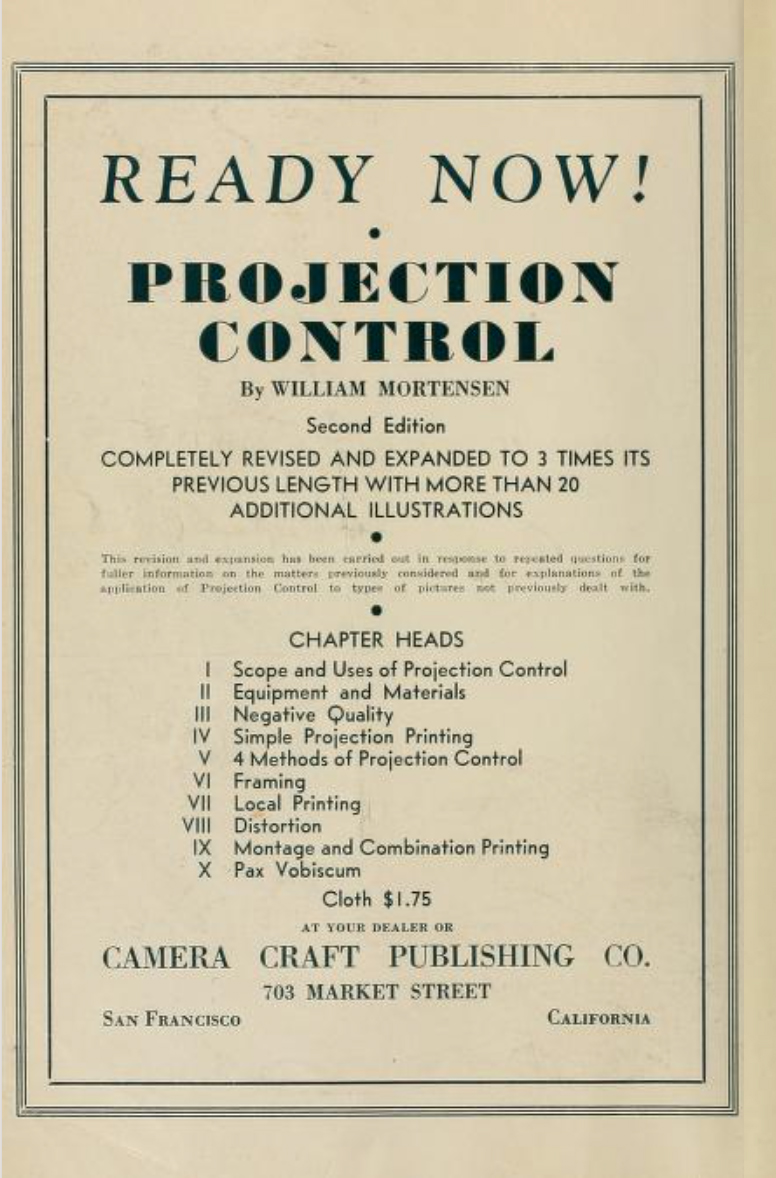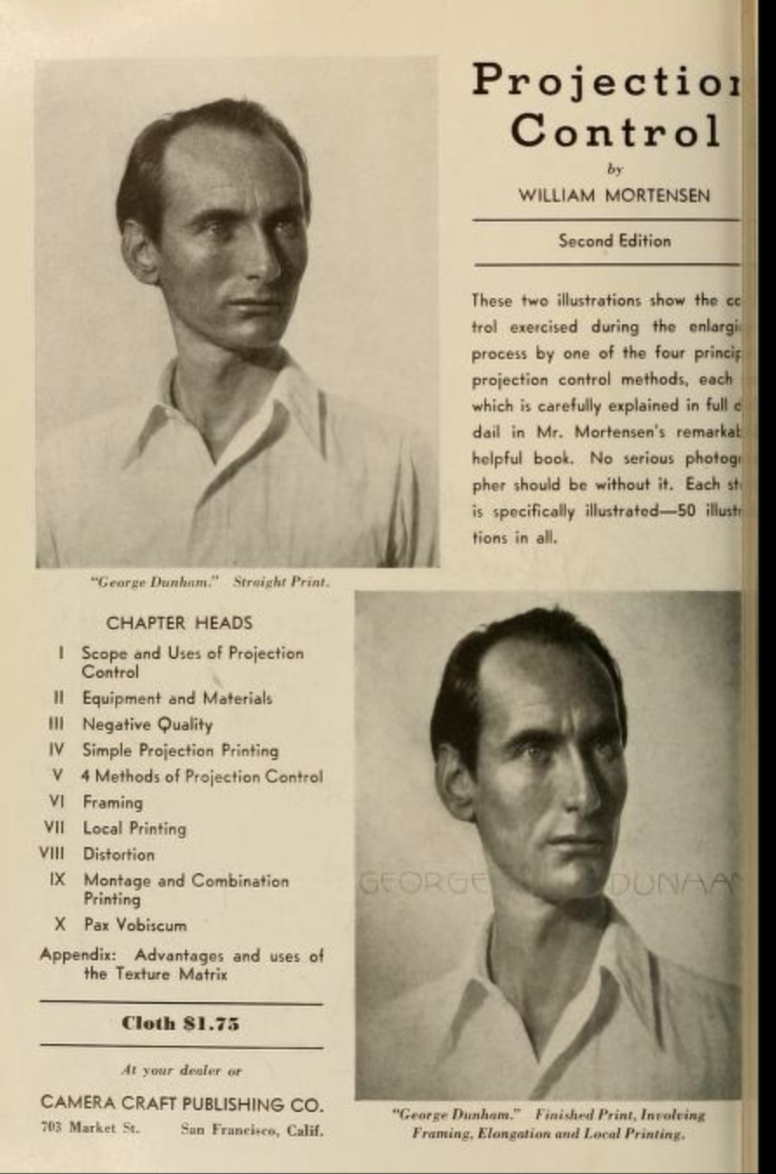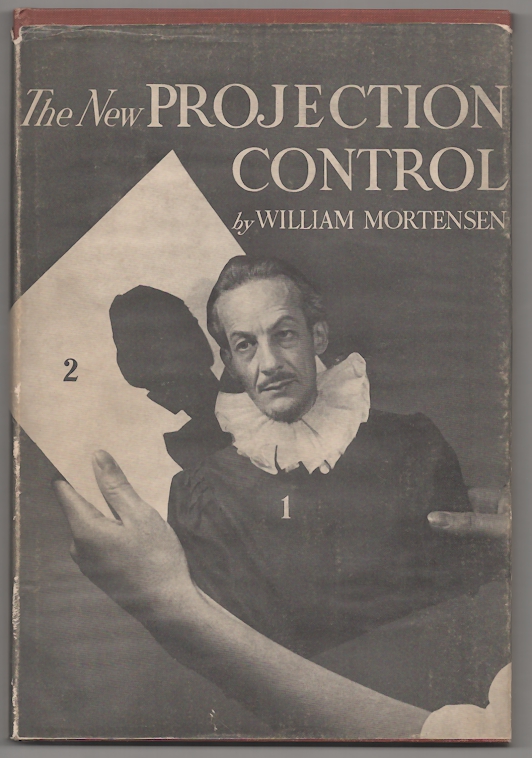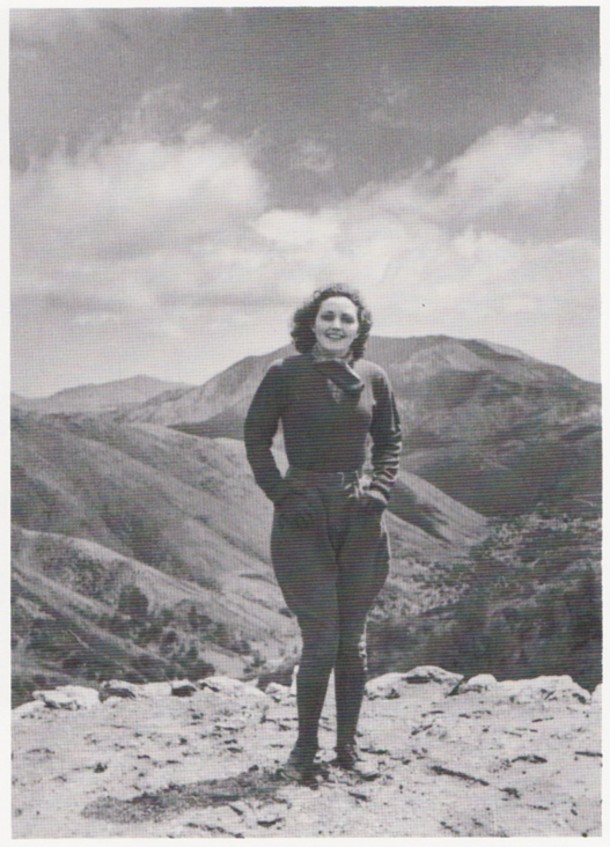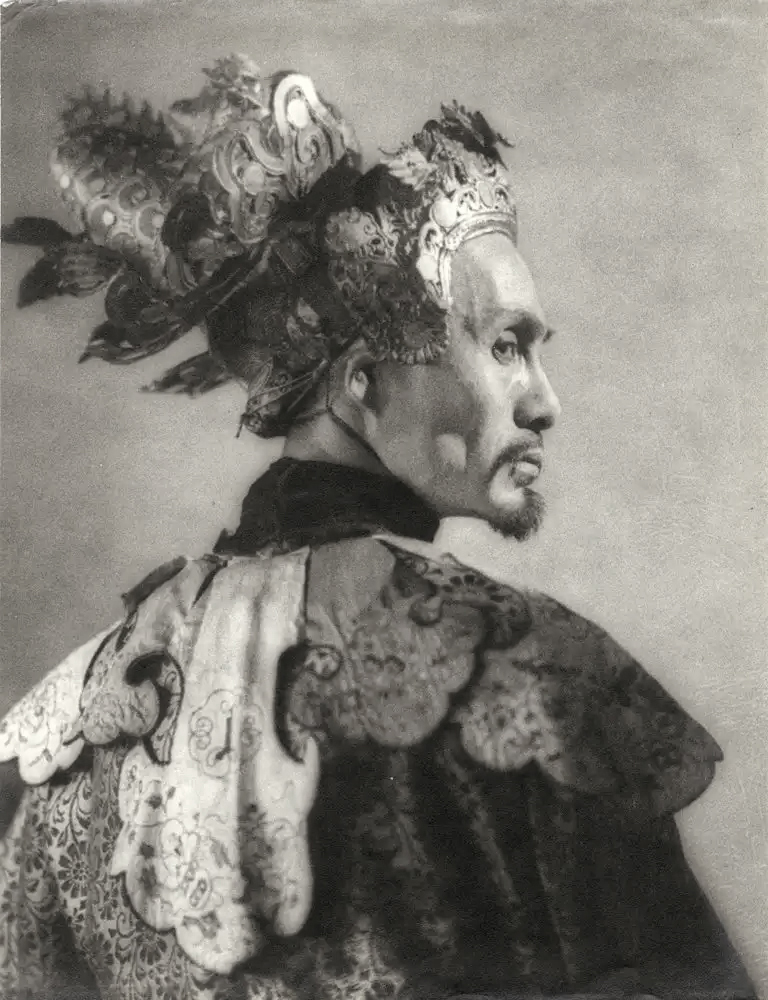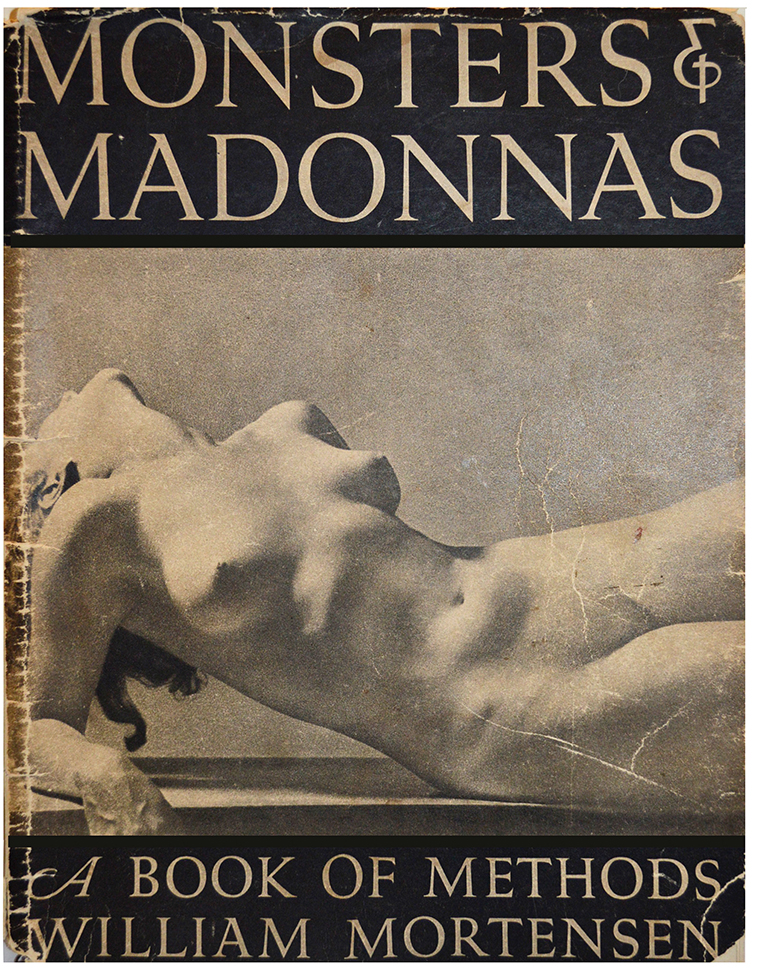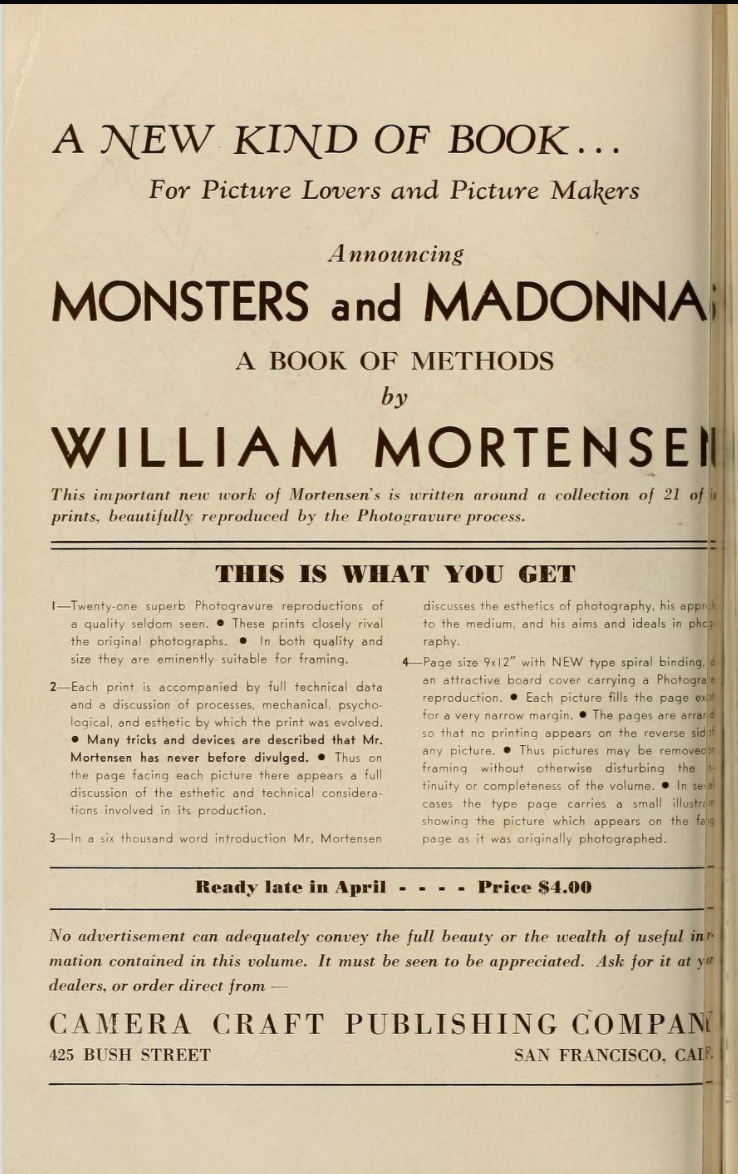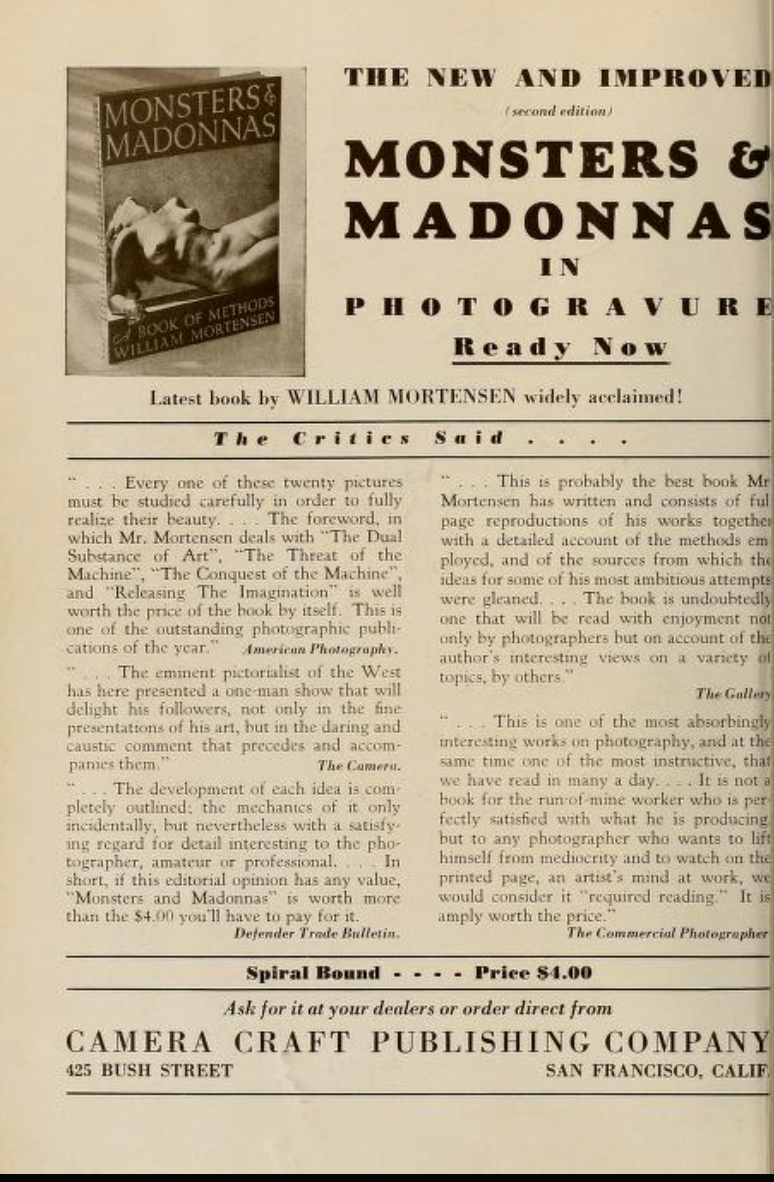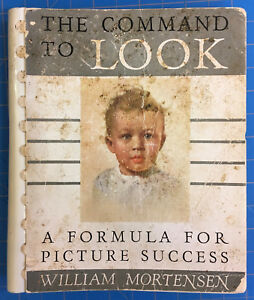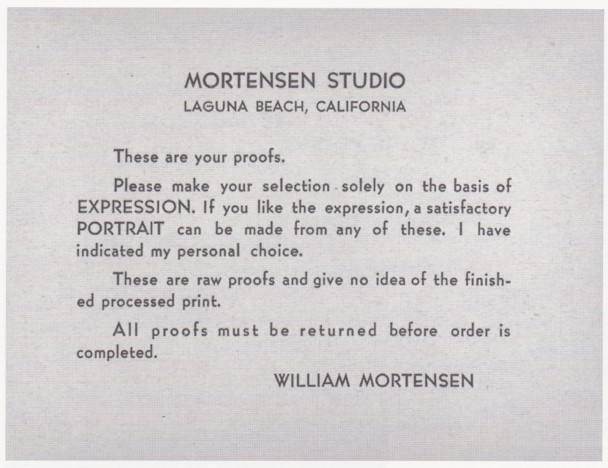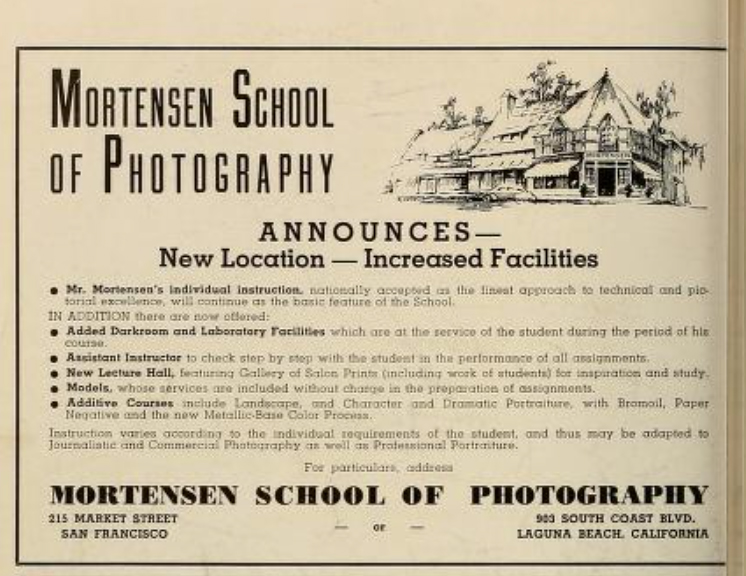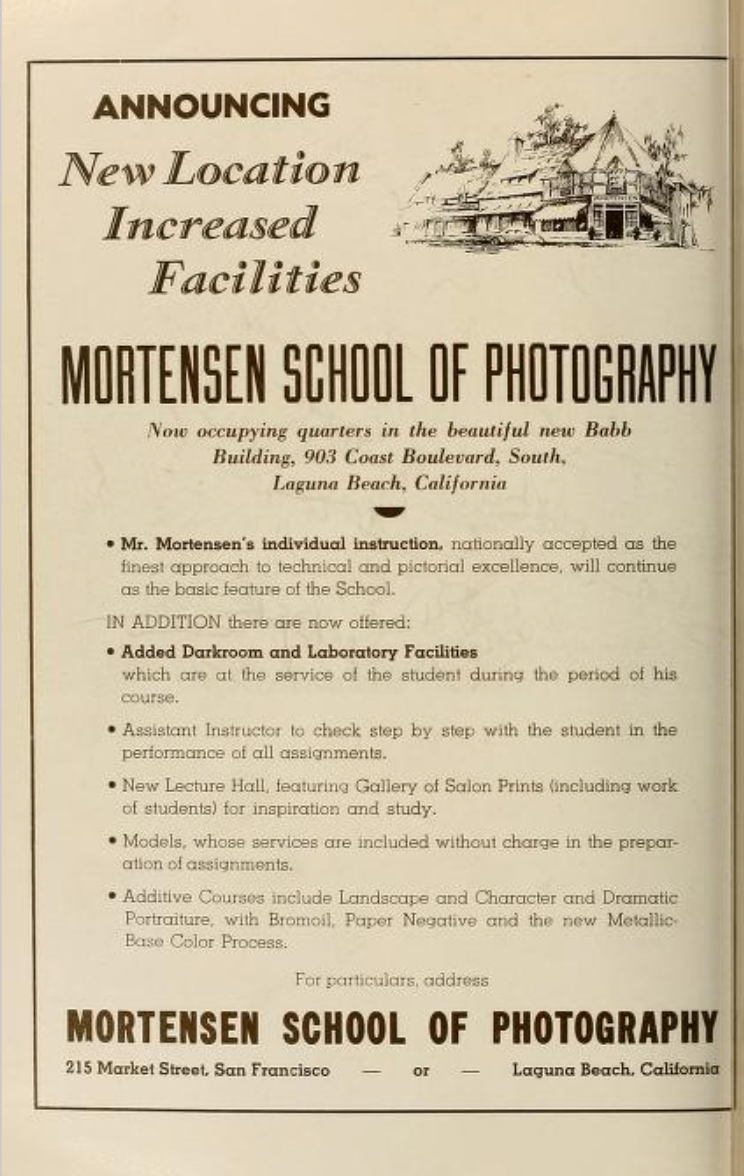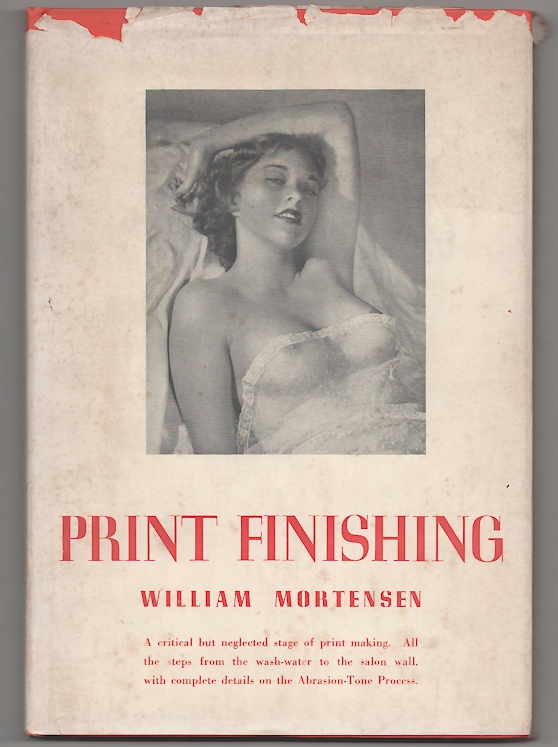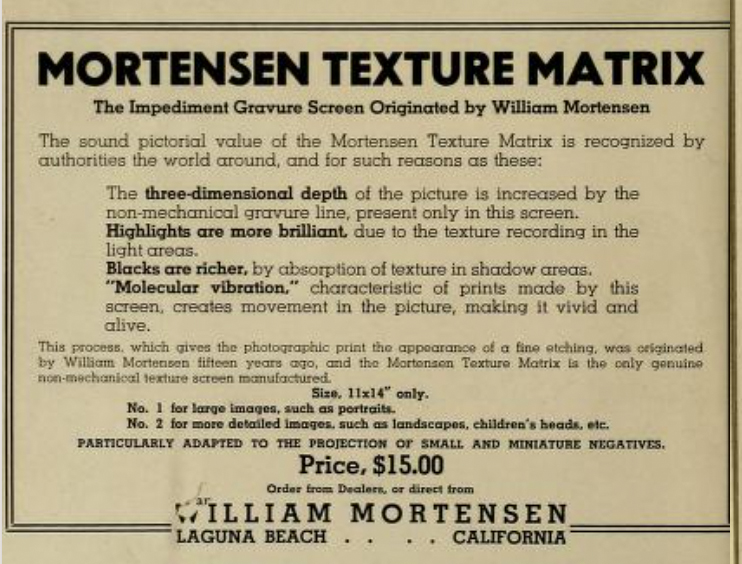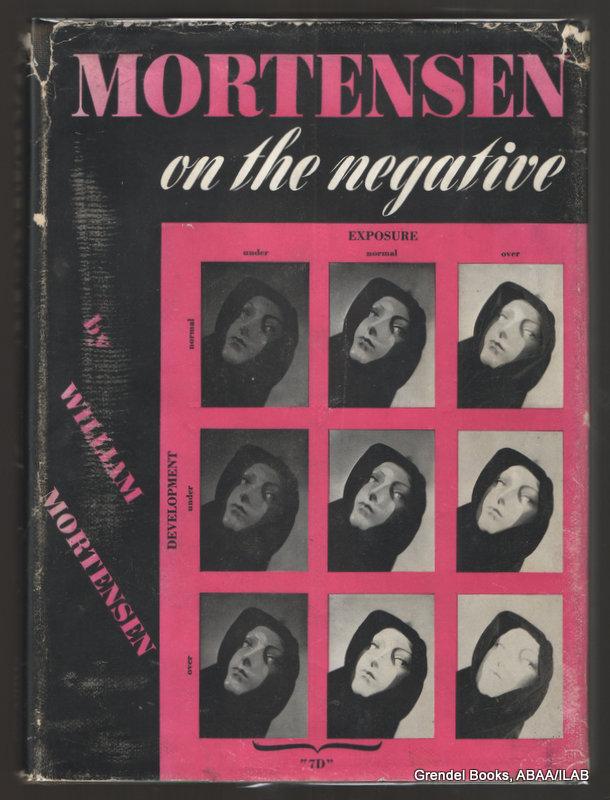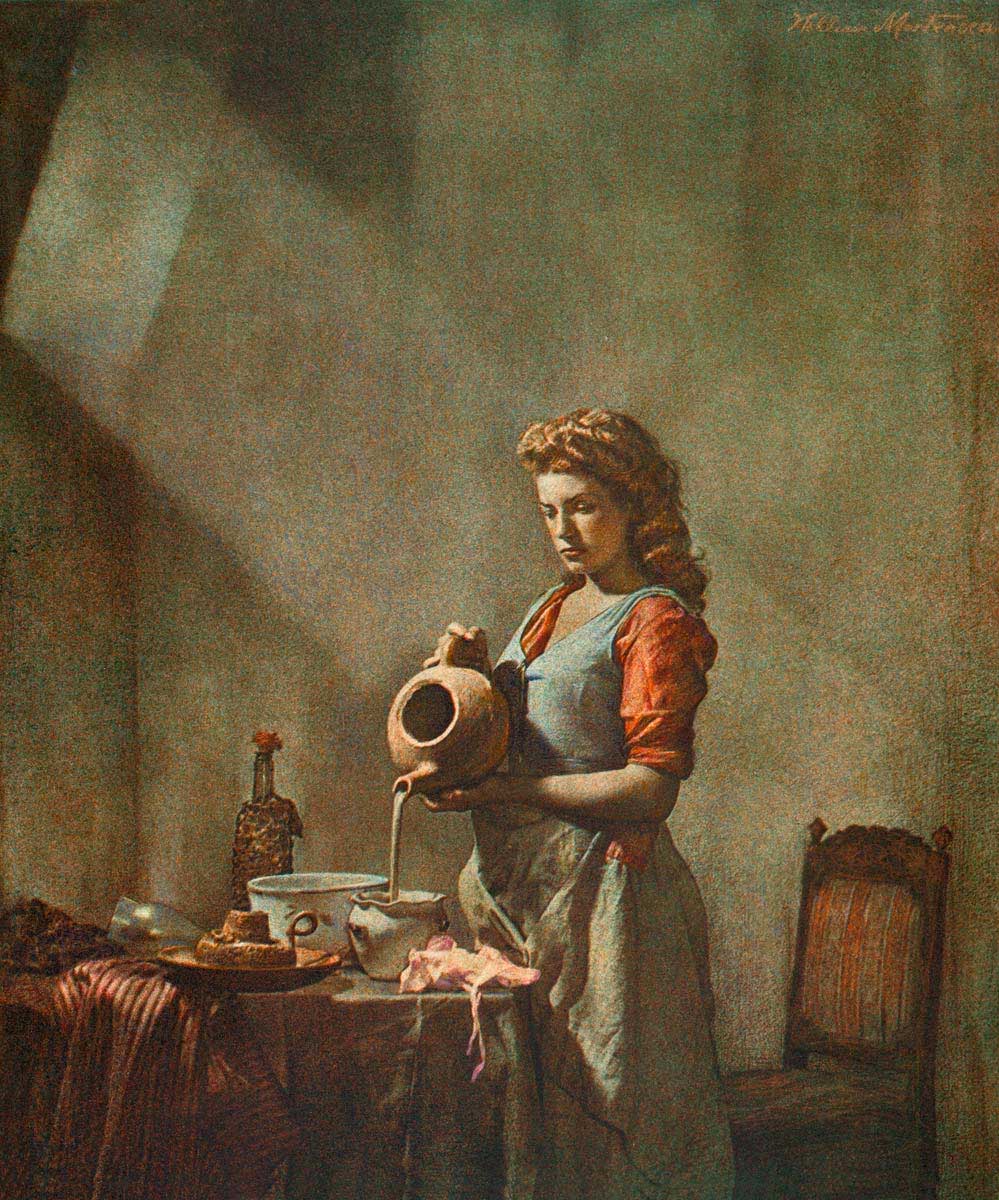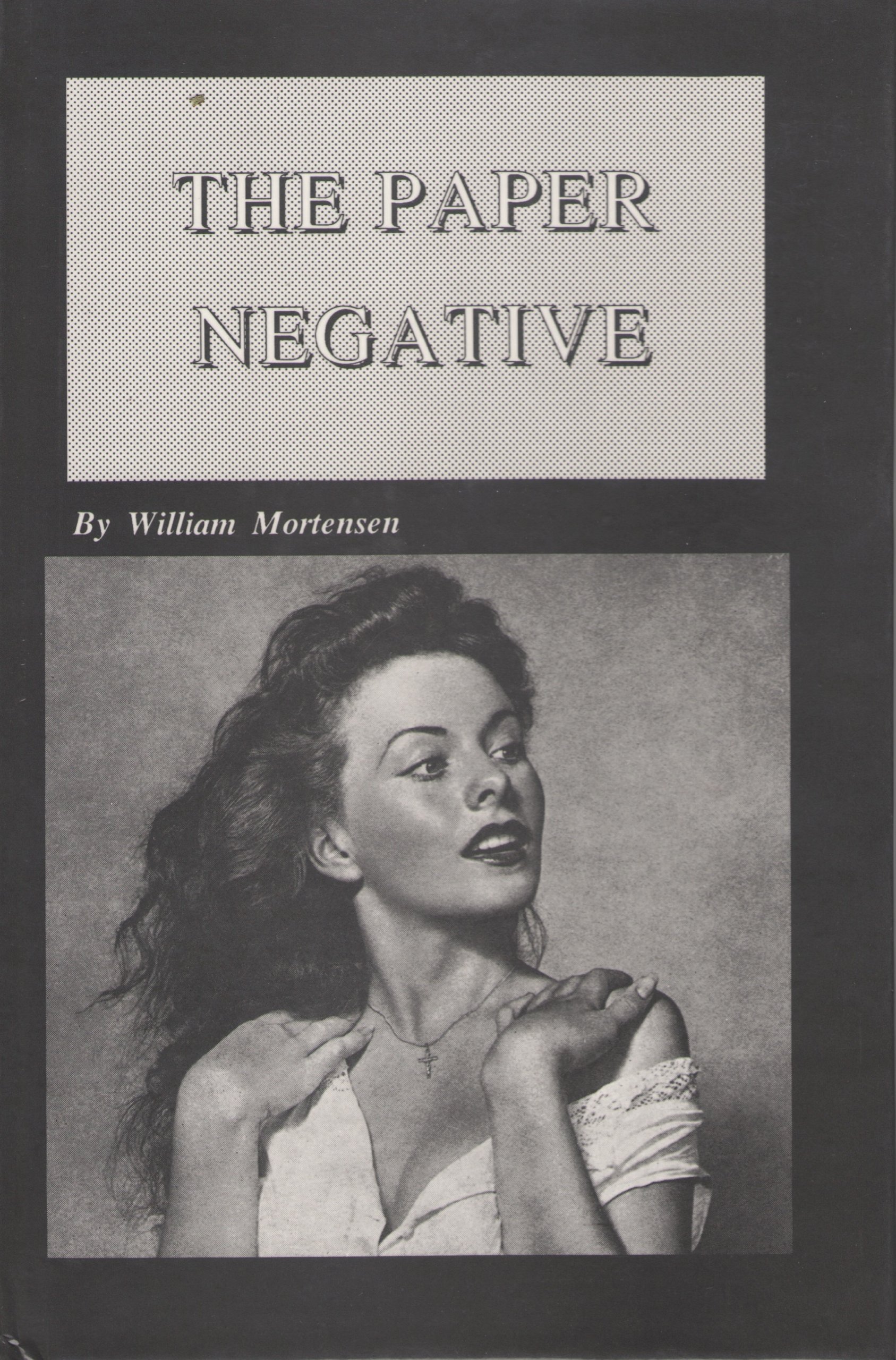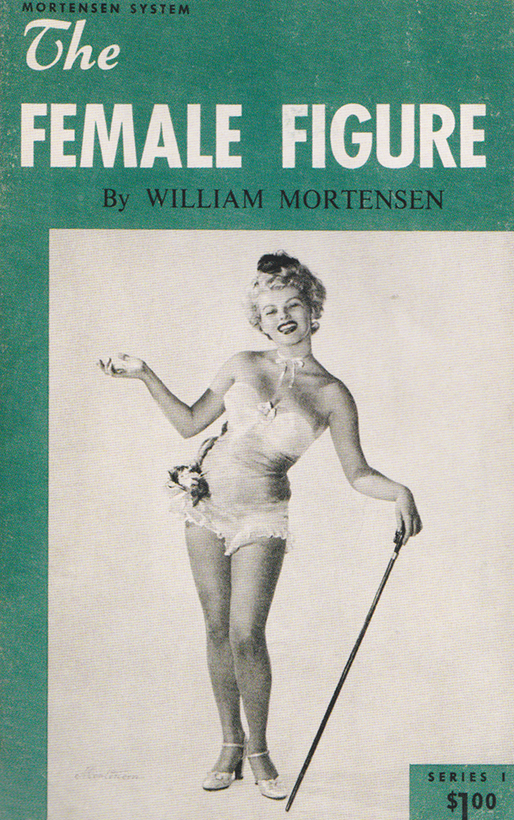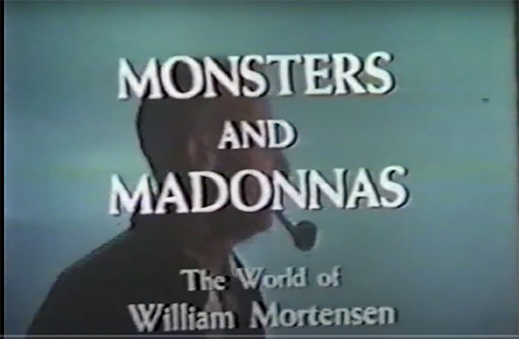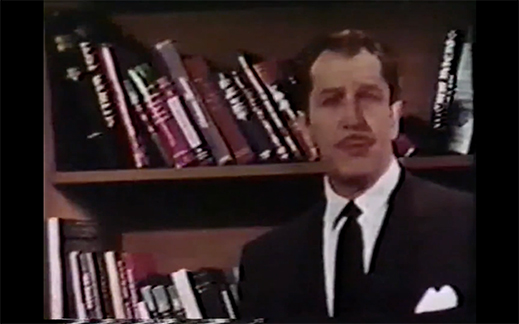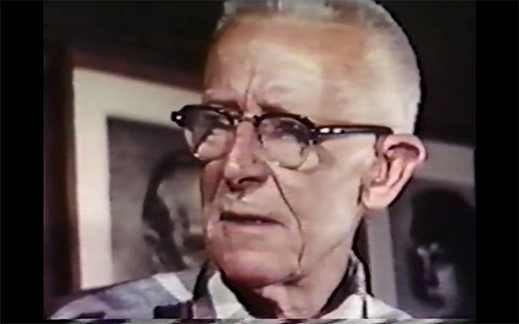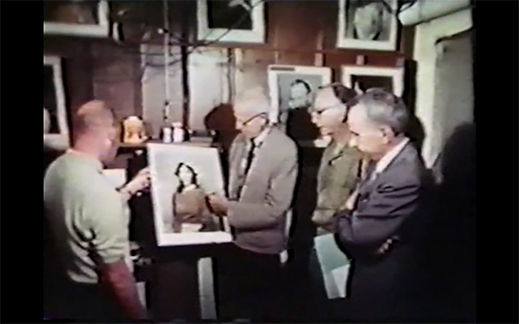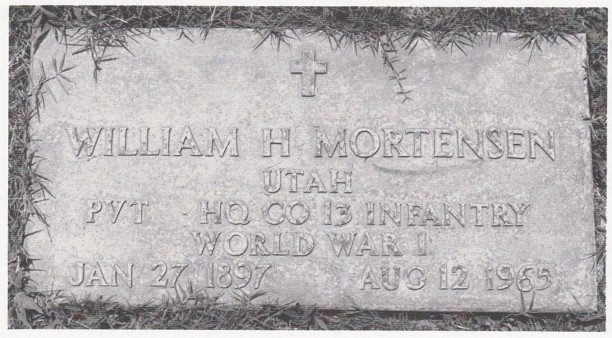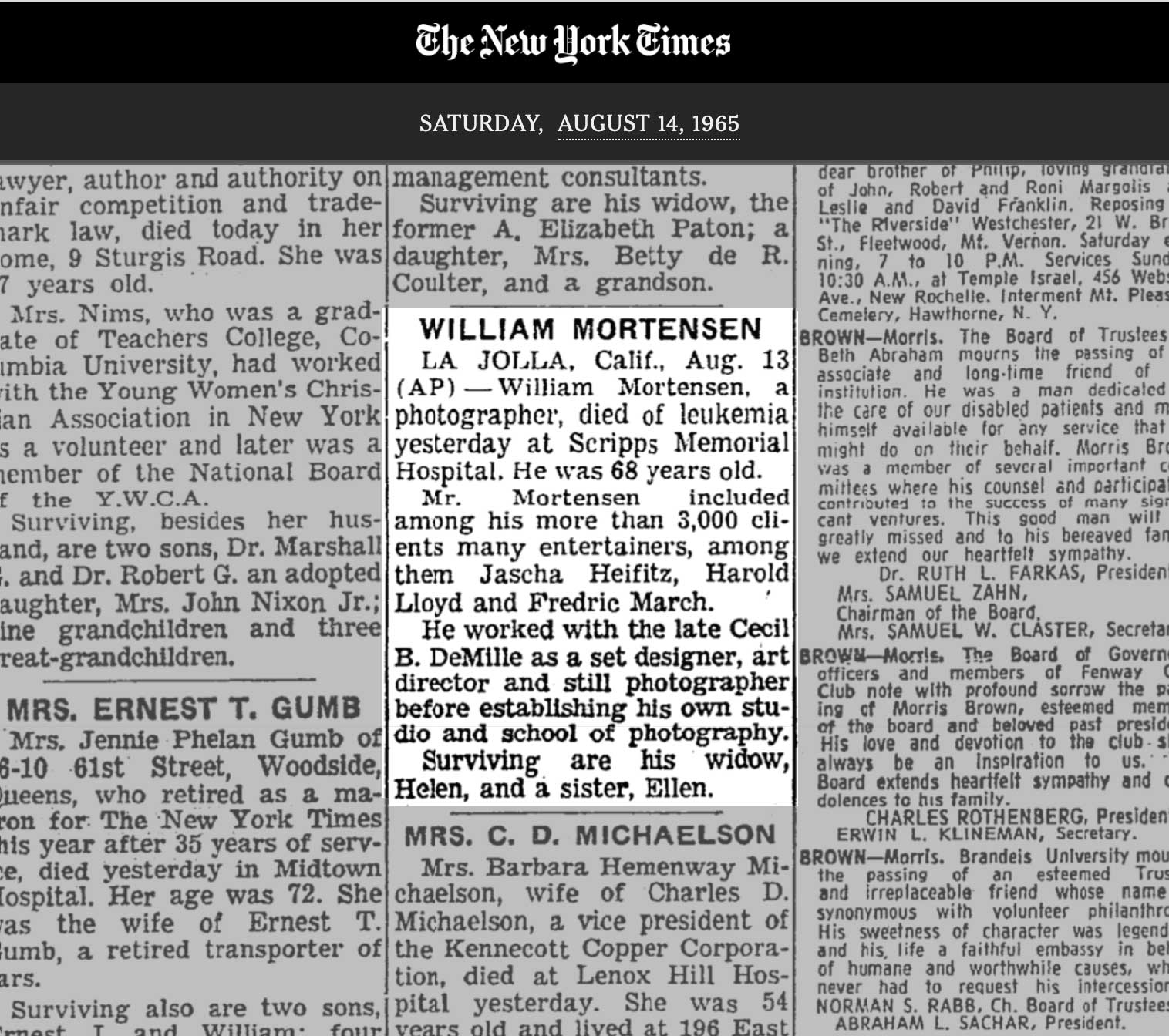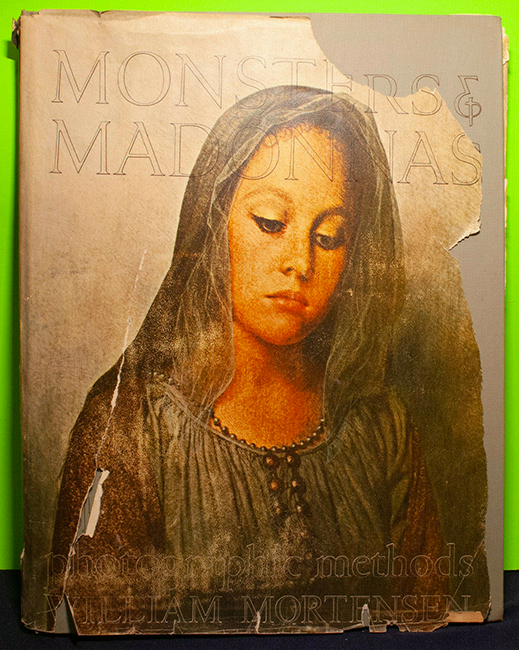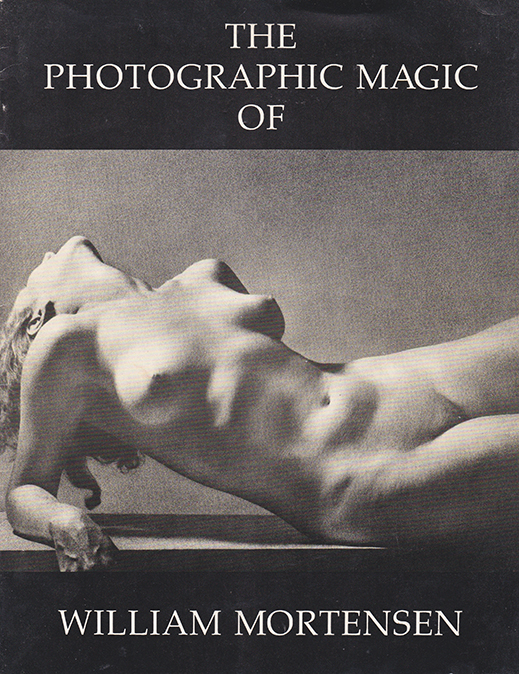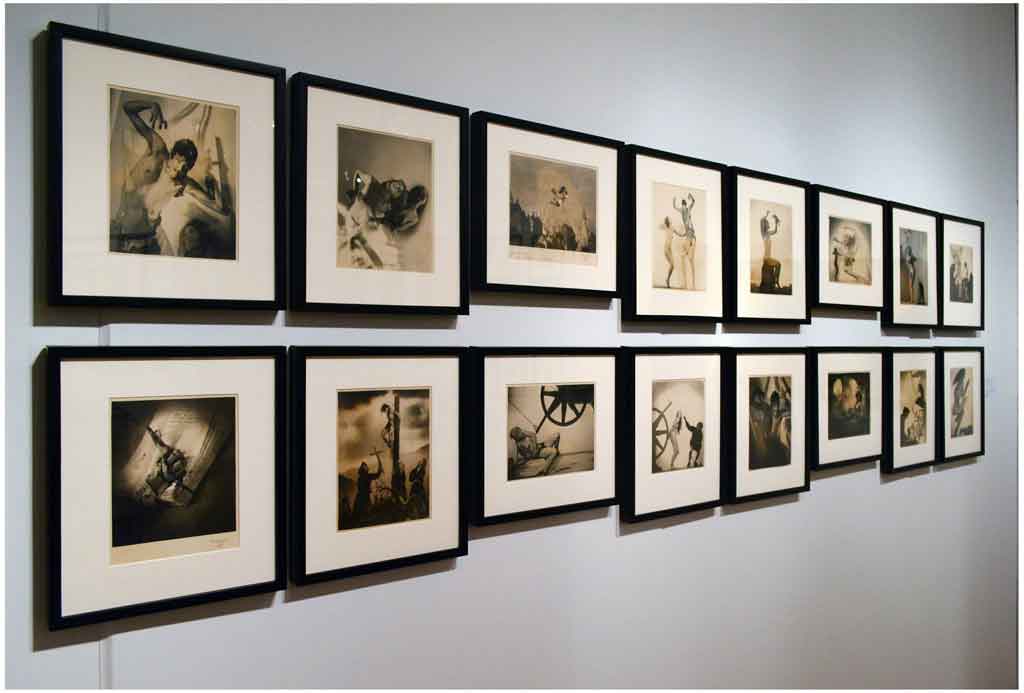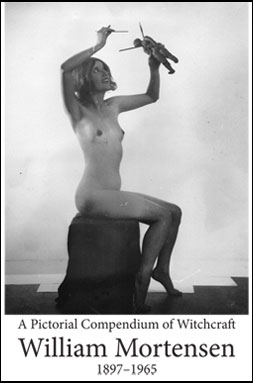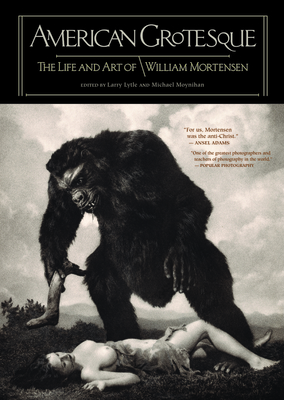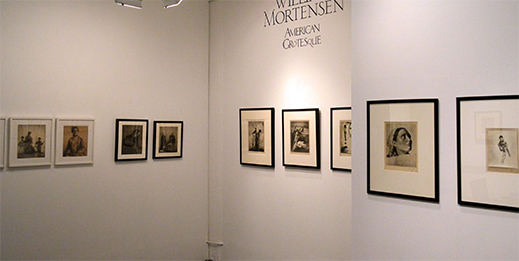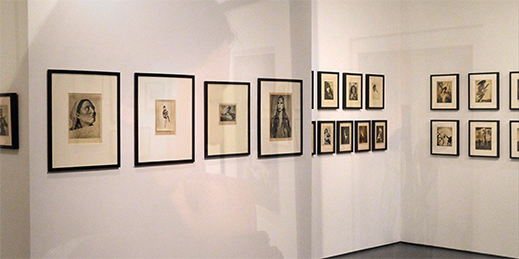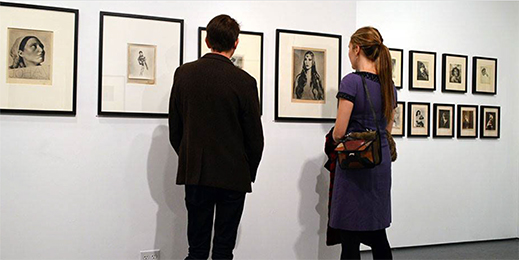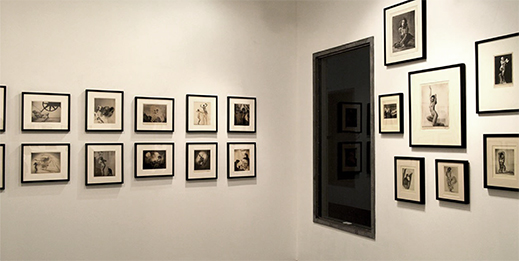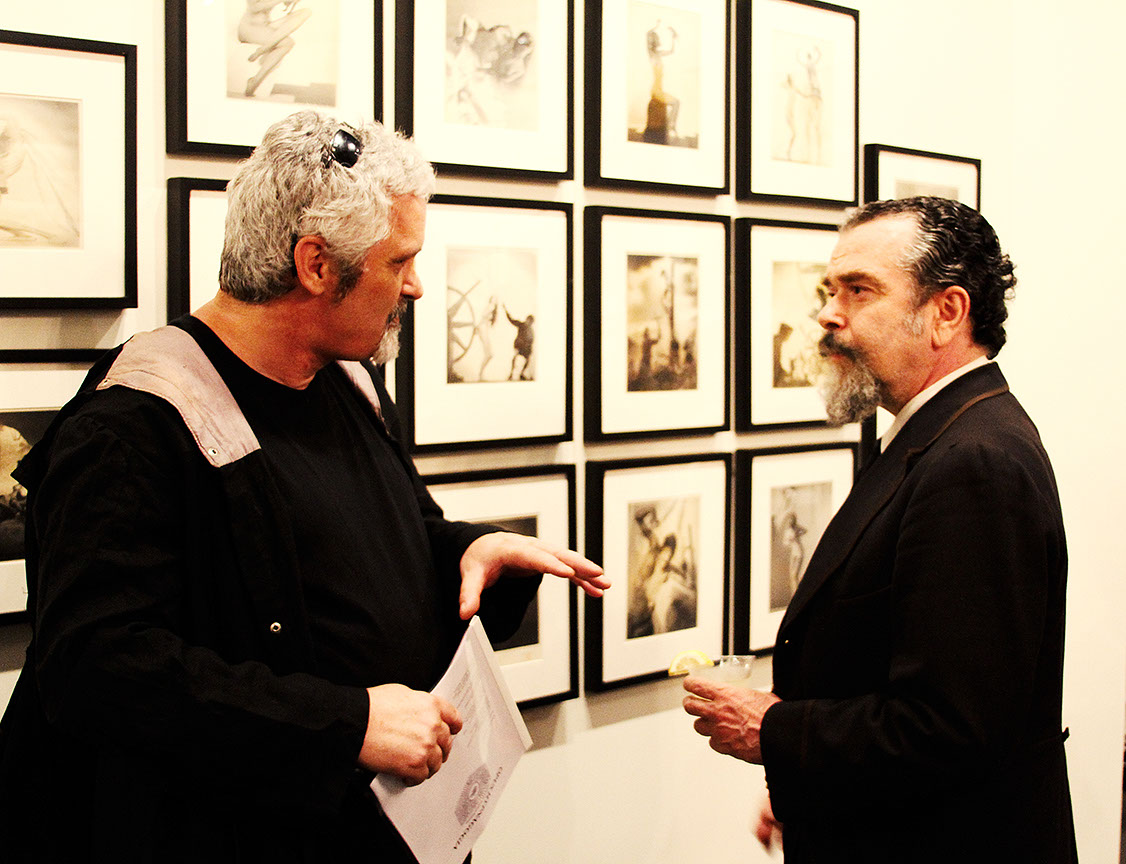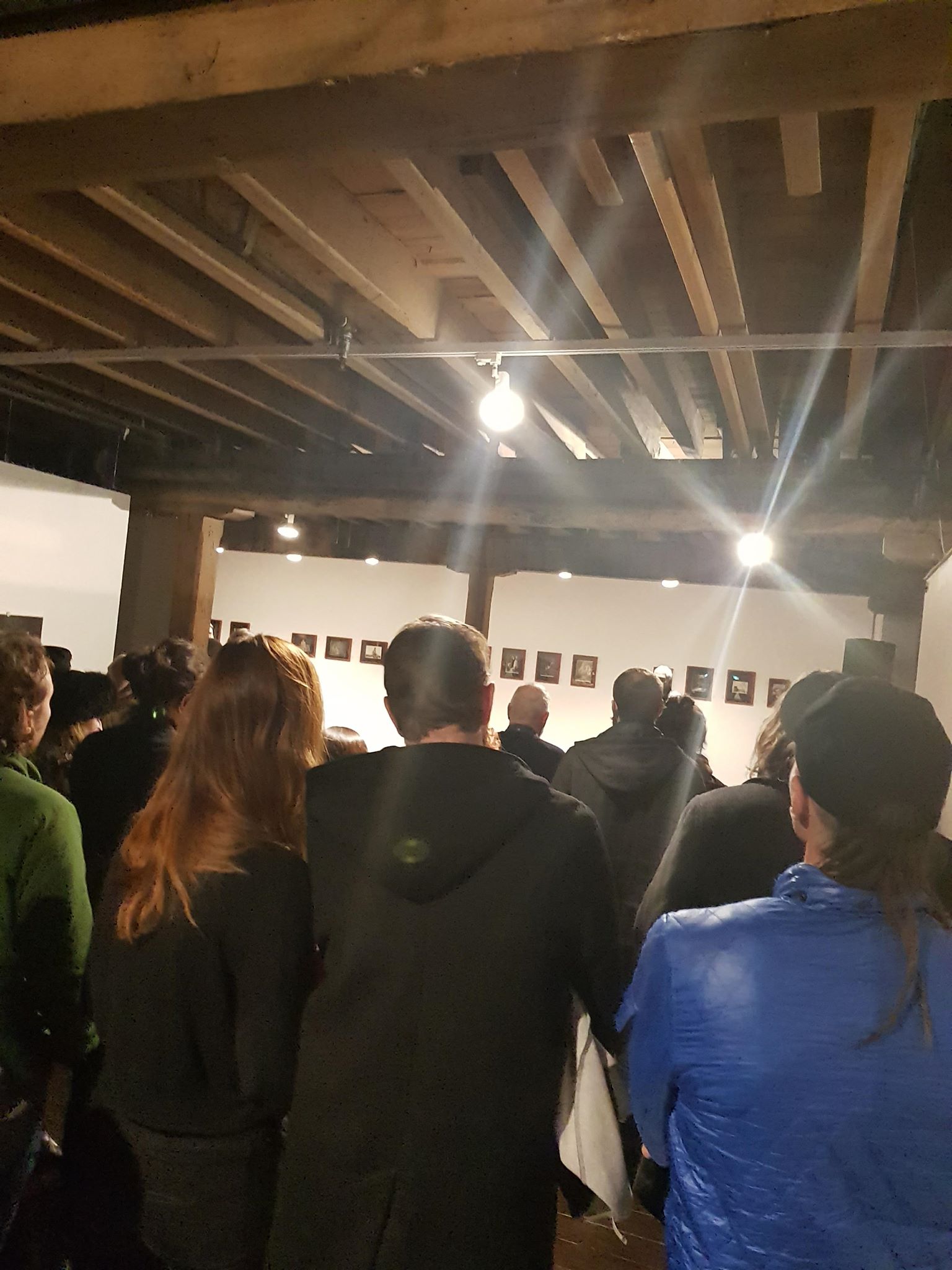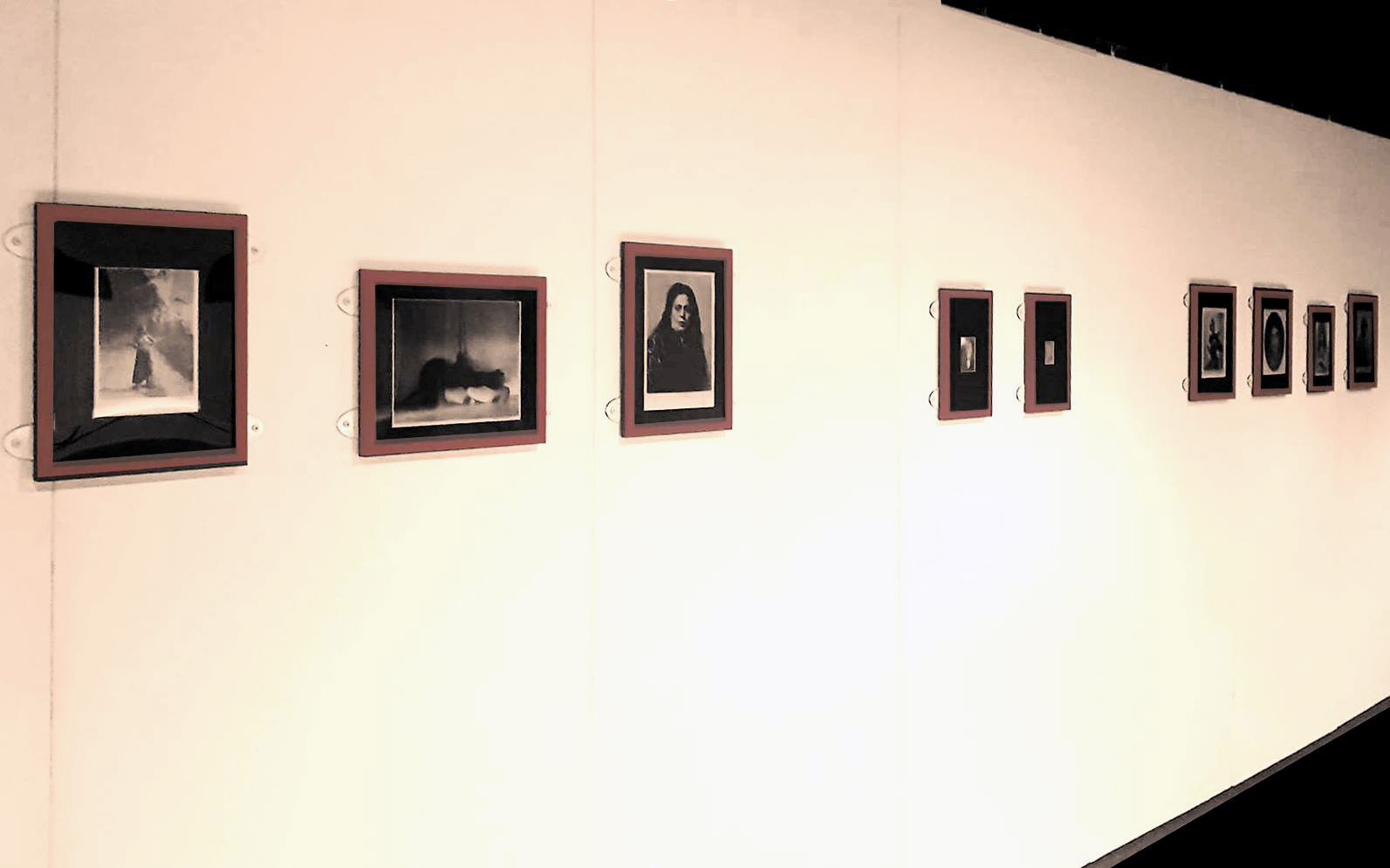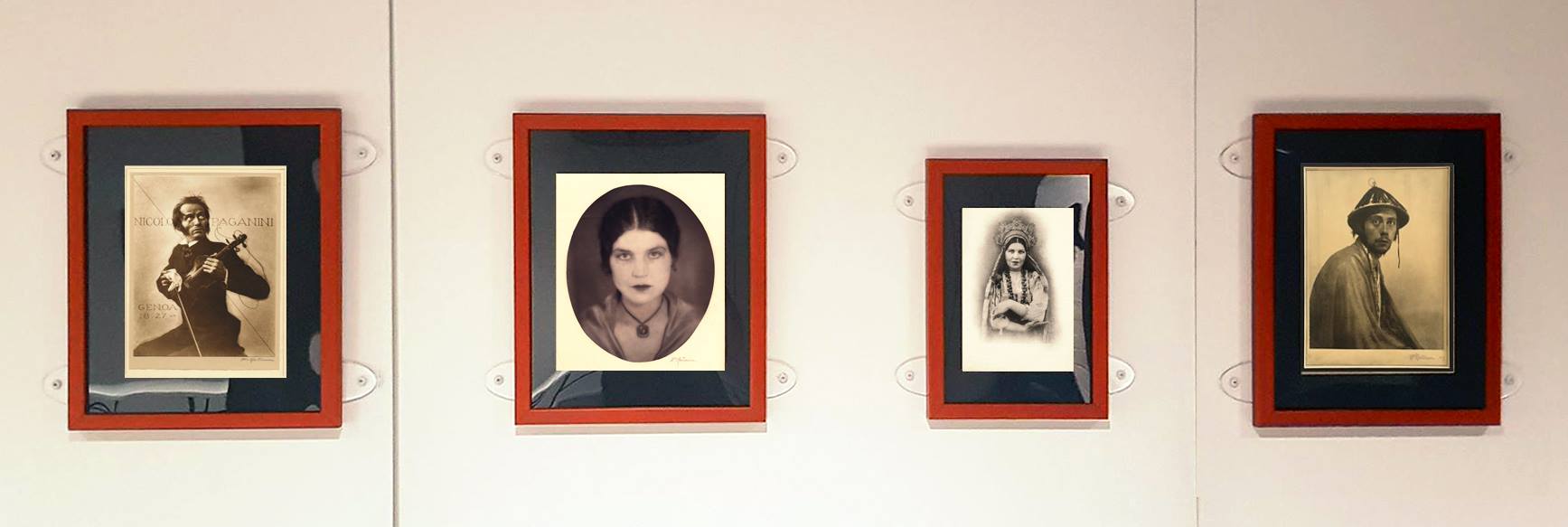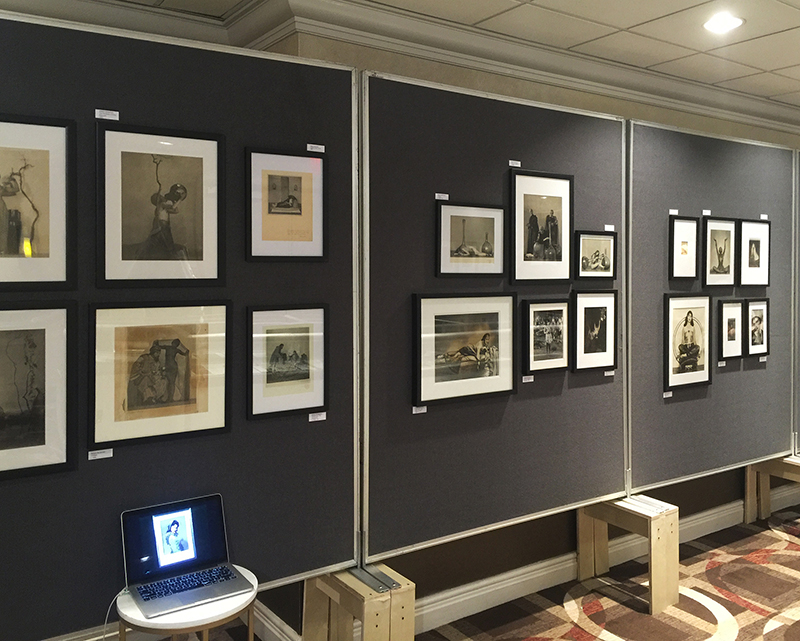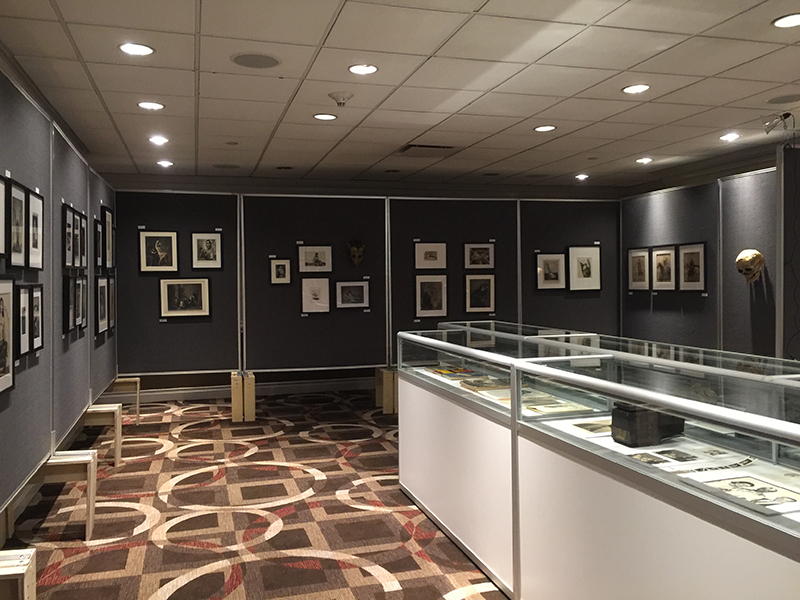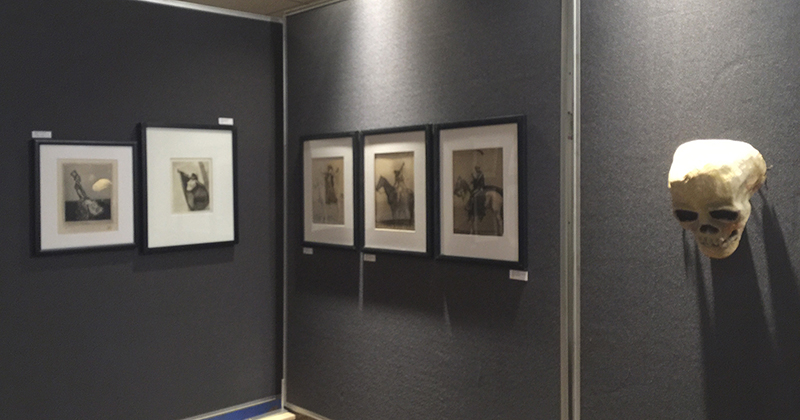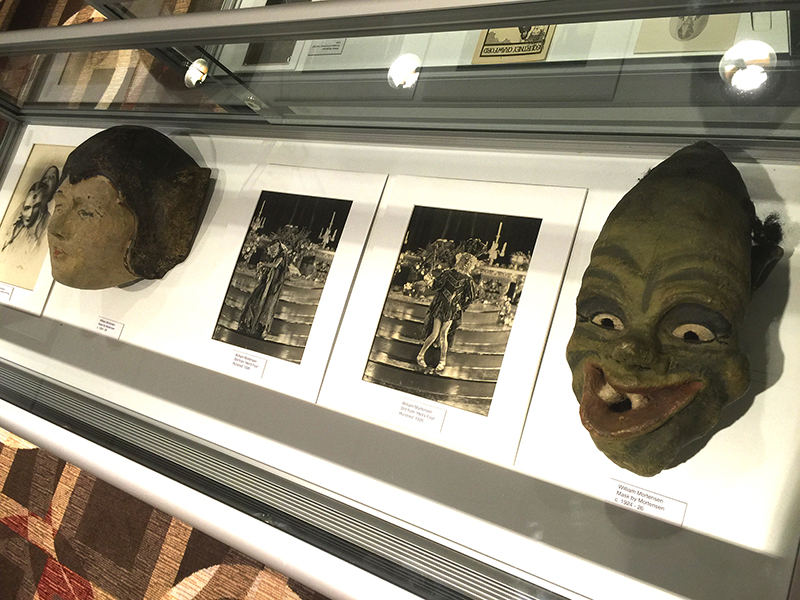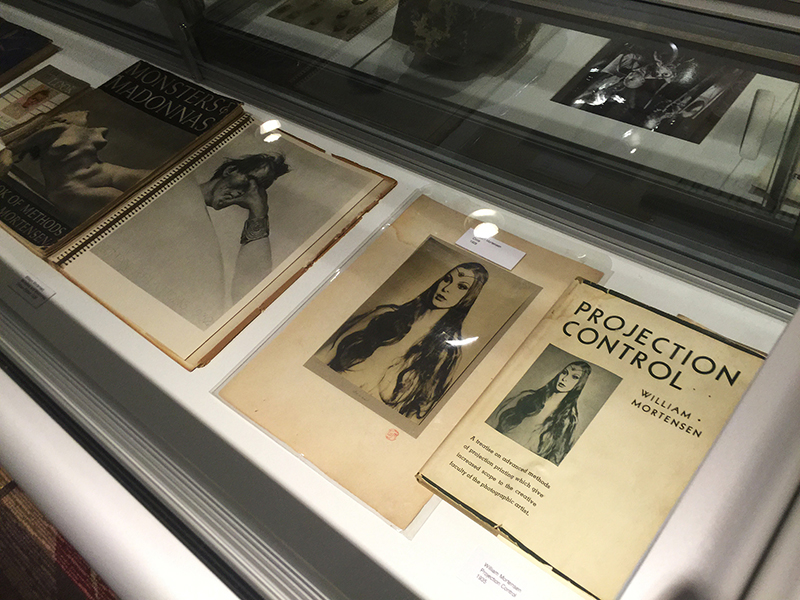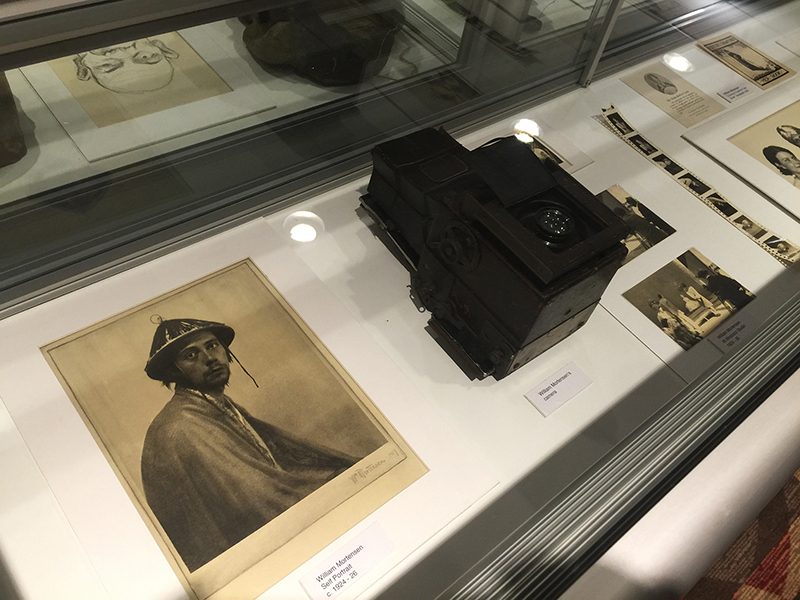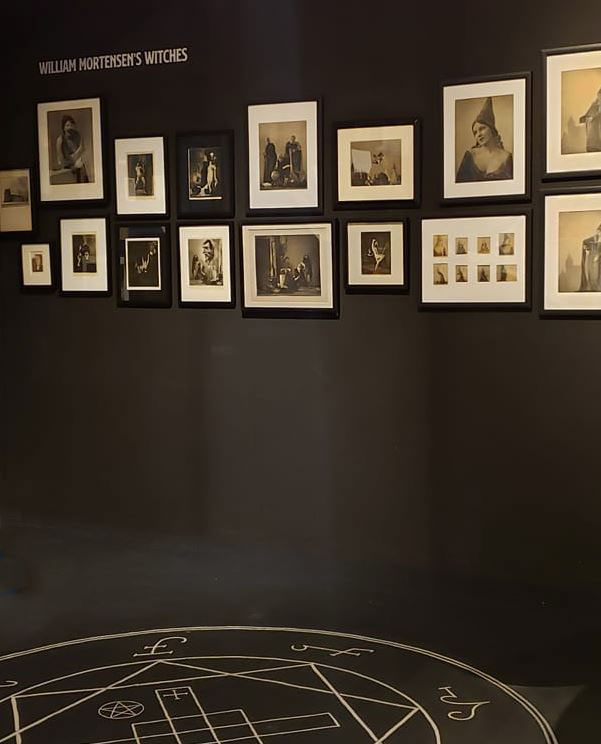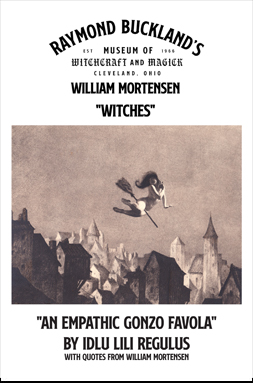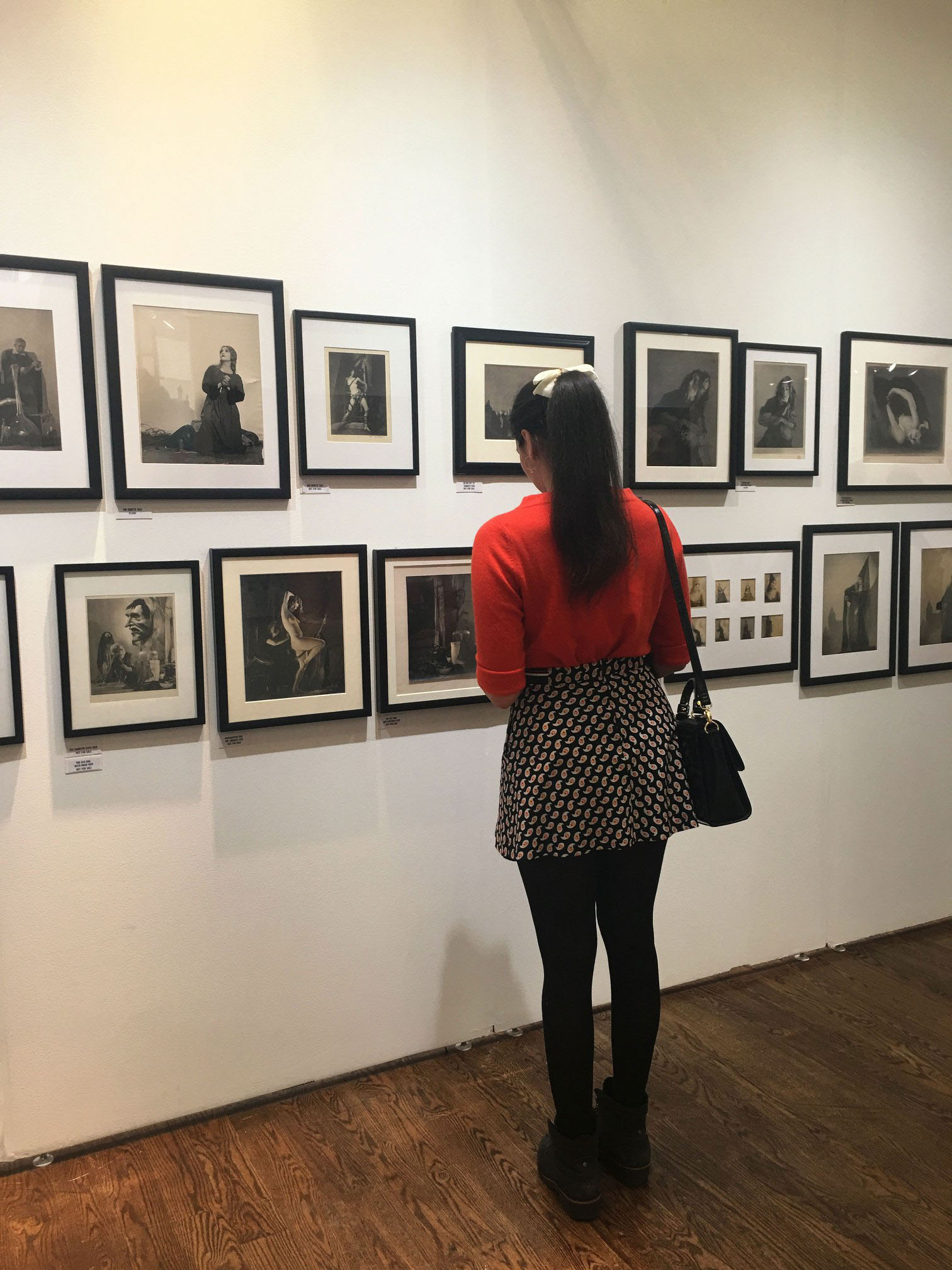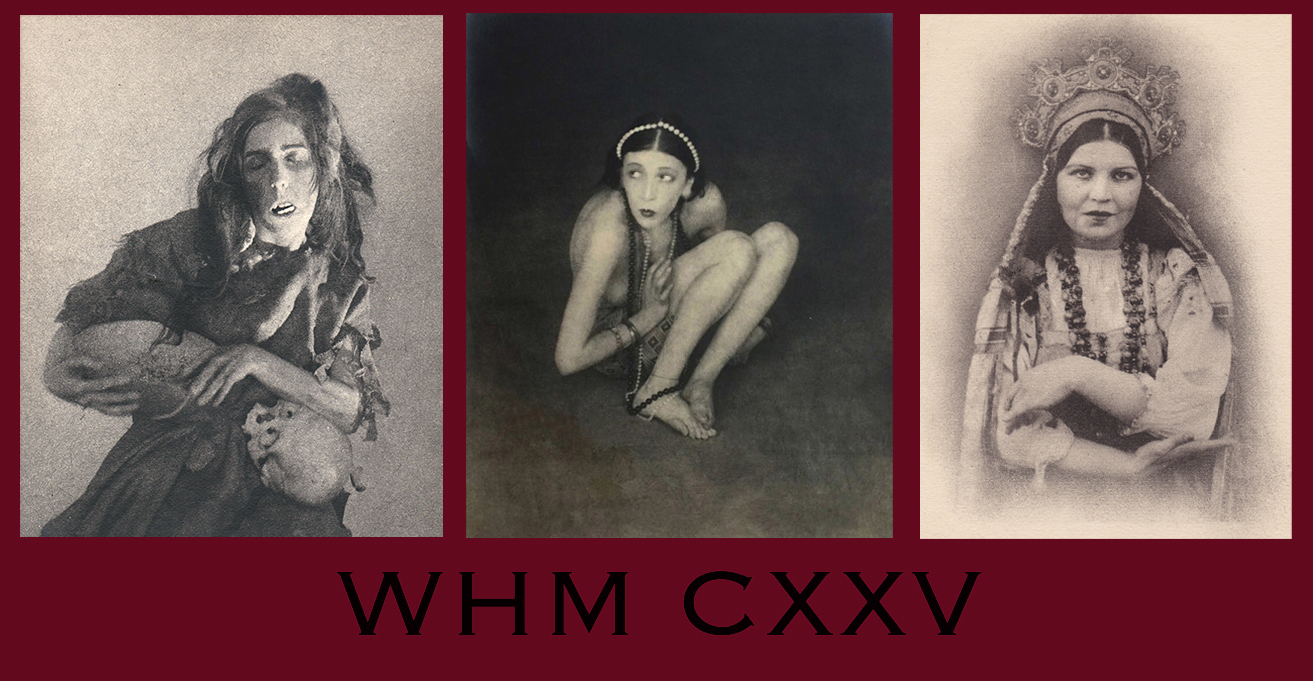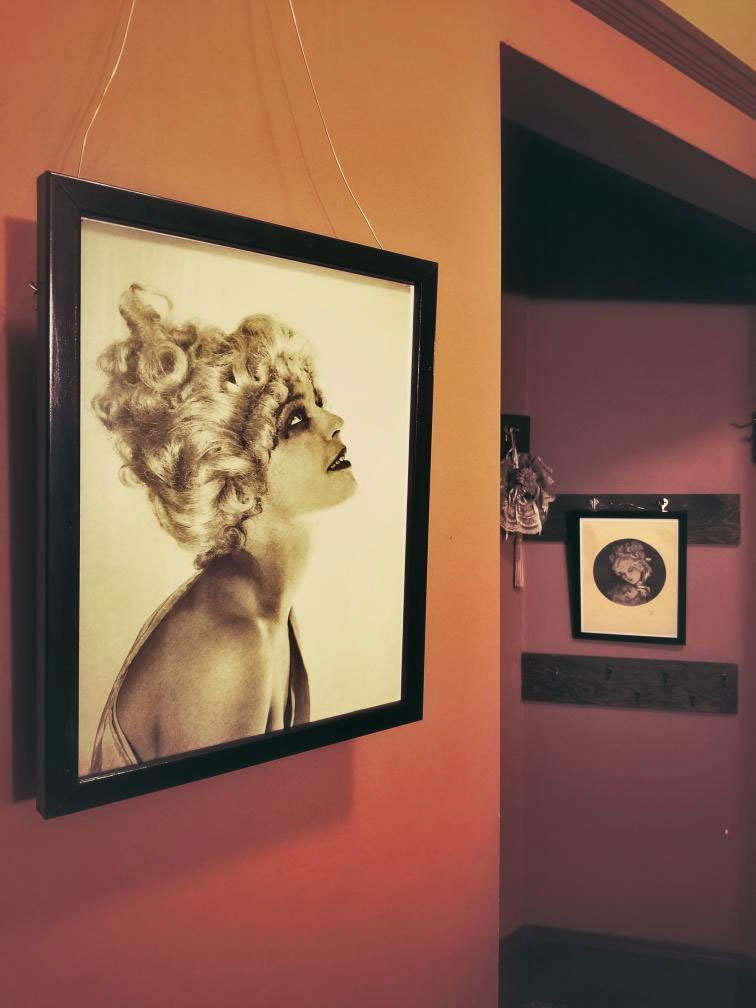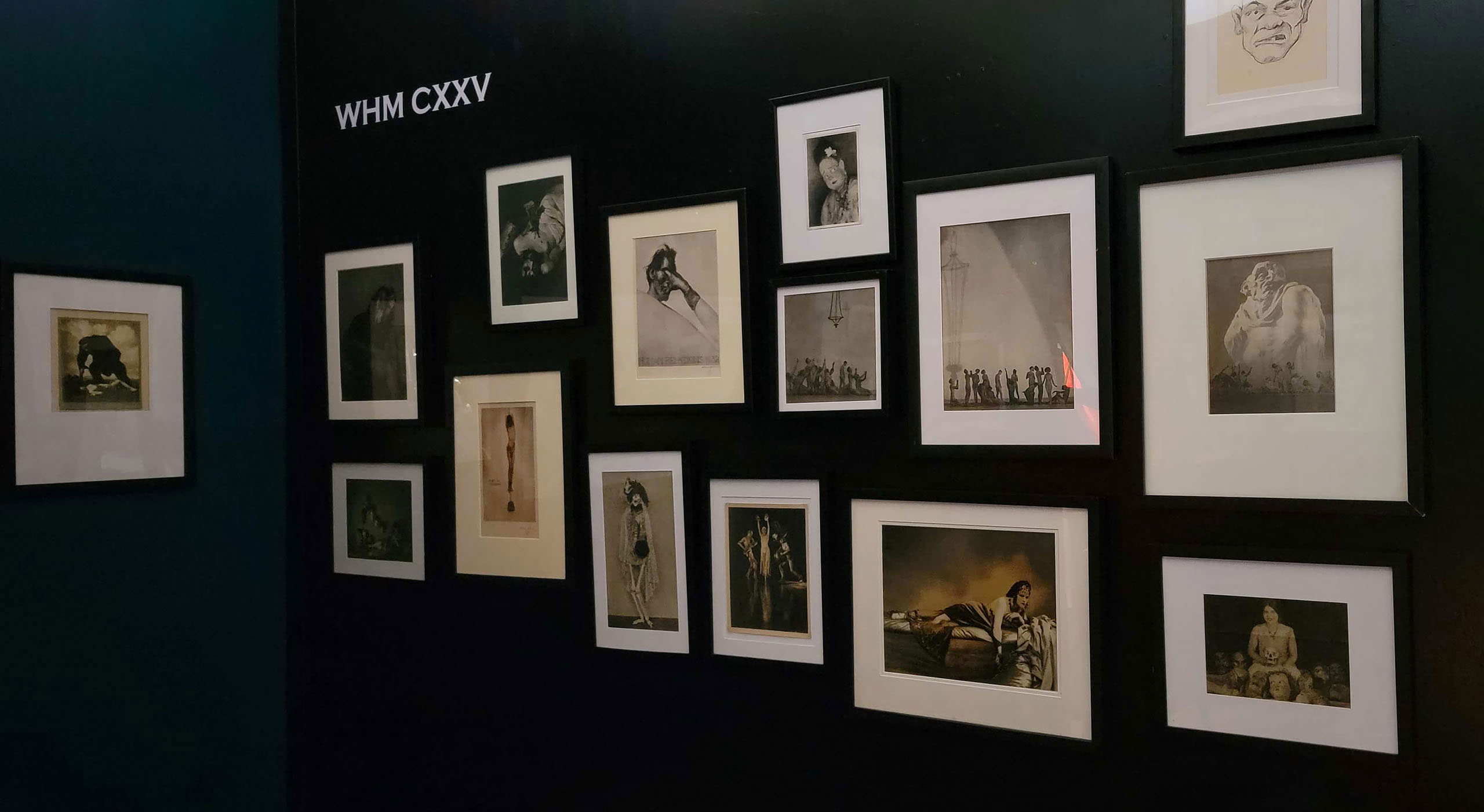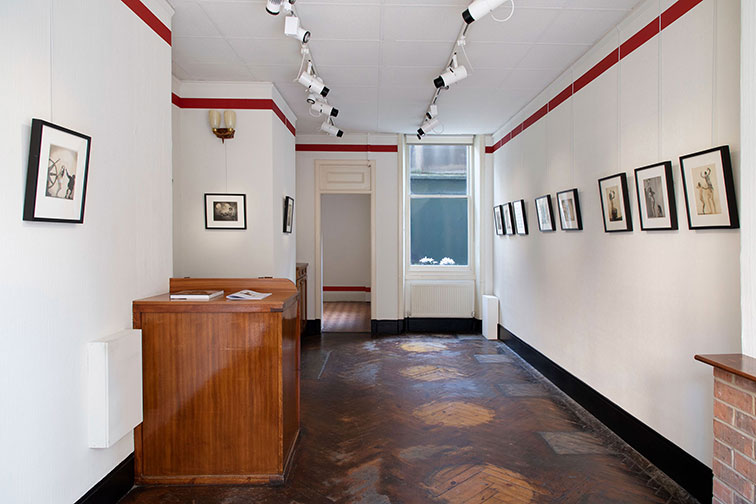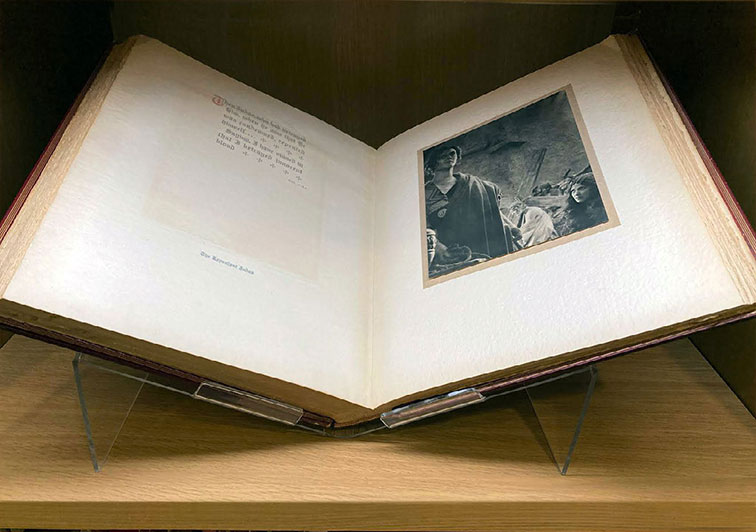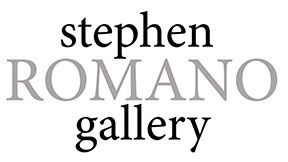
WILLIAM MORTENSEN
Chronology by Deborah Irmas
extracted from "The Photographic Magic of William Mortensen" exhibition pamphlet
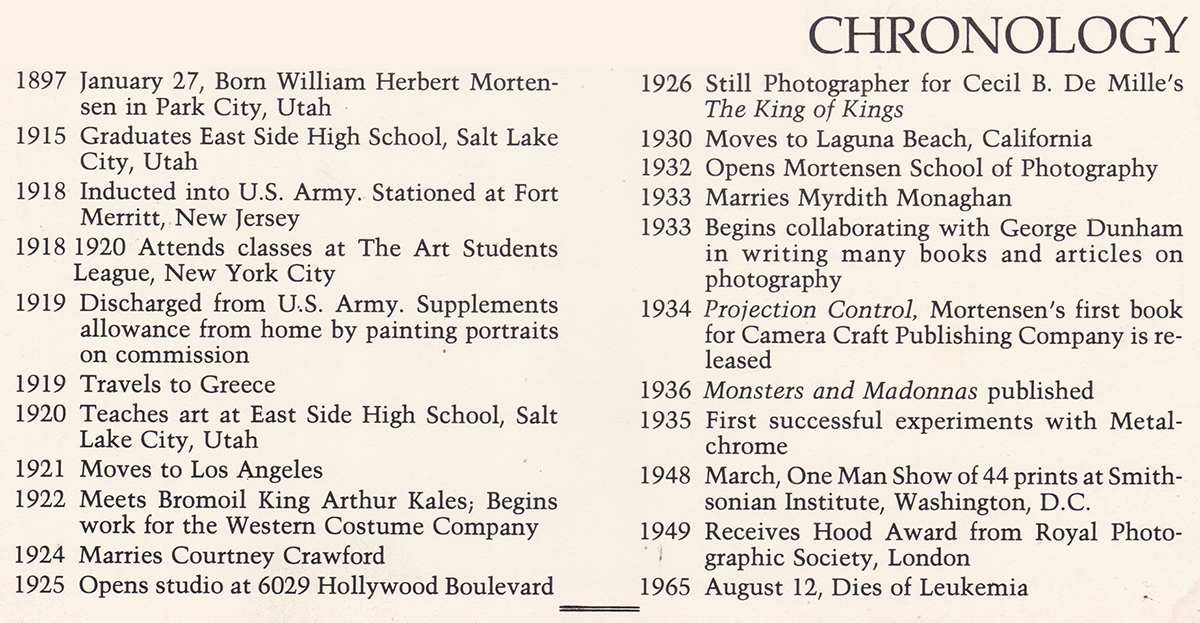
Timeline of his life and art
All entries marked * are extracted from from the catalog “William Mortensen: A Revival.”
"CHRONOLOGY with Related Cultural and Photographic Events"
by Amy Rule with contributions from Larry Lytle
(sources have been removed please refer to the original catalog for reference.)
Edited and additional notes by Stephen Romano
I. EARLY YEARS
1897
William Herbert Mortensen born January 27, 1897 in Park City, Utah.
Family of Danish ancestry consisted of father, William P. Mortensen (born Denmark 1859), mother, Agnes M. Mortensen (born Denmark 1860), and sister Ellen (born Utah 1886). The family's religious affiliation has not been established. * Diane Jensen, who knew Mortensen, told Stephen Romano Mortensen was Christian Science.
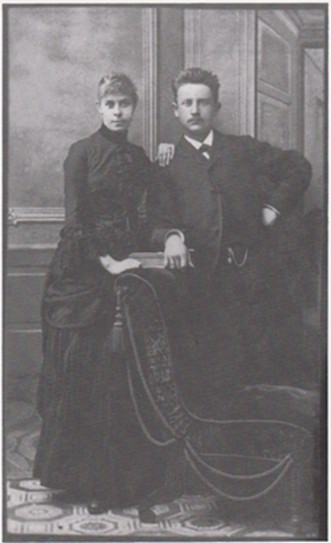
Mortensen's mother and father Agnes and William P. Mortensen, date unknown.
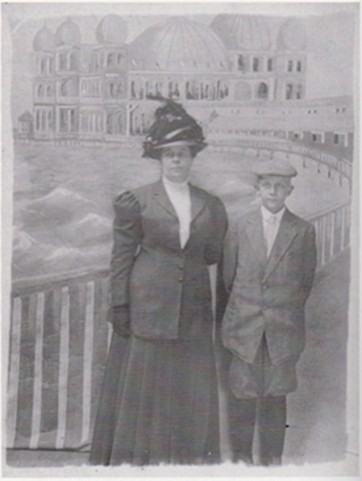
William Mortensen and his mother, Salt
Lake City, date unknown.
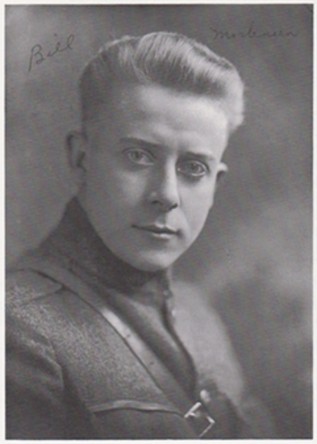
William Mortensen as a private in the
United States Army, ca 1917*
1907
Mortensen receives a gift from his mother, his first camera, a Brownie camera .
1909
The Mortensen family moved to Salt Lake City. Mortensen aspired to be an artist.*
1917
Mortensen joins the army.
1918
William Mortensen was discharged from the Army as a Private December 23.
1919-20
Mortensen attended classes at The Art Students League, New York City, studying drawing and
painting with George Bellows, Robert Henri, and George Bridgman.*
some works produced by Mortensen during his studies:
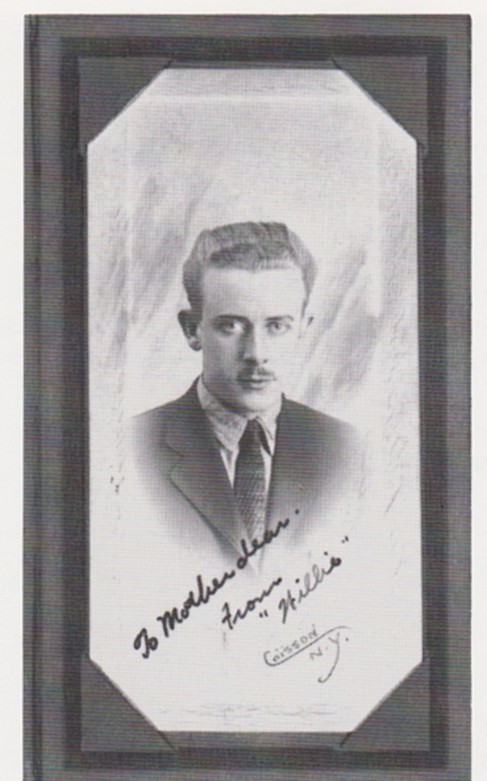
Mortensen was told by an instructor at The Art Students League that he "had no talent for drawing."
1919
Mortensen traveled by freighter to
Greece, arriving May 1.
He earns money painting poster designs for a cognac company.*
Mortensen returned to Salt Lake City and began teaching art at East Side High School.*
Mortensen began photographic experiments with 5x7-inch view camera using female high school students as models.*
1921
At the end of the school year, Mortensen resigned his position with East Side High School. Mortensen wrote that 'it was mutually agreed upon between the Board of Education and myself that it would be best for all concerned that I submit my resignation'
II. LOS ANGELES
Mortensen moved to Los Angeles in the fall.
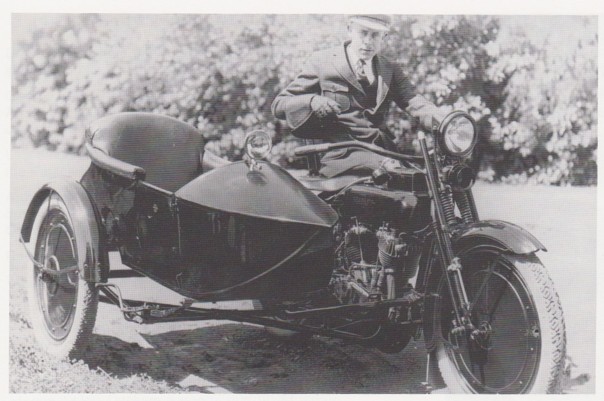
William Mortensen on his Harley-Davidson motorcycle, ca. 1921.
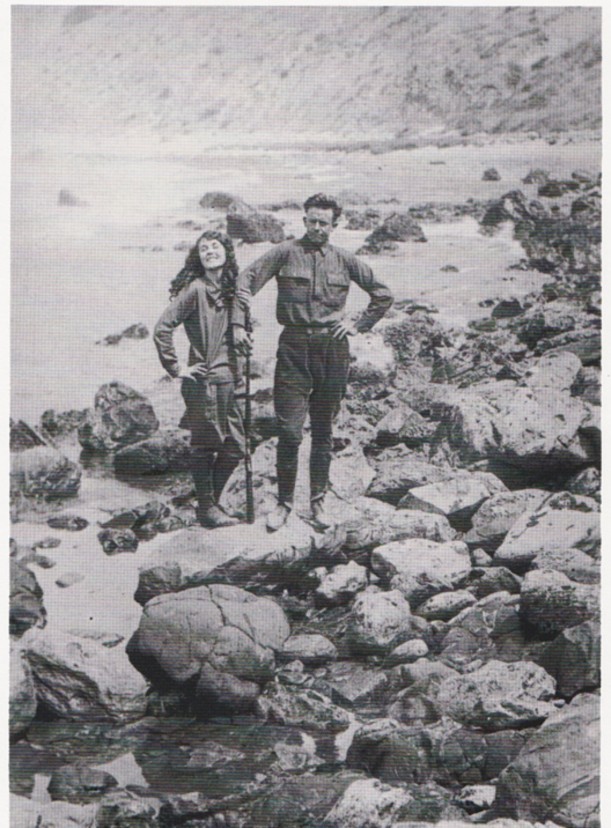
Actress Fay Wray and William
Mortensen, California coast, ca. 1921.
Actress Fay Wray wrote that he moved to Los Angeles in 1921, and that she accompanied him on the train trip from Salt Lake City. At the time. Wray was fourteen years old . Mortensen wrote that he traveled by Harley-Davidson motorcycle and that, as unlikely as this may seem, he took his camera. hundreds of costume studies, plus a large collection of his own masks.*
Mortensen began working in the Western Costume Building supplying masks and photographs of the costumes for various commercial projects. *
"Western Costume is a costume warehouse in Hollywood, California, which supplies costumes and costuming supplies to the film and TV industry. One of the oldest businesses in the industry, the company out-dates any studio or production company currently in operation." - Wikipedia
1925-26
William Mortensen met photographer Arthur Kales.
Sources state that Mortensen "learned photography under Arthur Kales", and that he was "taught personally by Arthur Kales, the 'Bromoil King. Another source states he "learned still photography from Arthur F. Kales. head still photographer on 'King Kong- (p. 58). No documentation has been found to clarify what Mortensen's relationship or debt to Kales might really have been. Mortensen began working in the Wetzel Photographic Studio. *
1924
Entire eleventh floor of Western Costume Building was turned over to Mortensen for his studio. Mortensen photographed Hollywood stars such as Rudolph Valentino, Jean Harlow, Norma Shearer, Lon Chaney, and Clara Bow.
Mortensen would do commercial work for the movie studio at Wescoco, and also use the resources to make his own art on the side.
Here he began developing his own techniques, and made some of his most famous works. In the example here, he used the masks he made for the final scene of Todd Browning’s “West Of Zanzibar” to create his own original compositions.
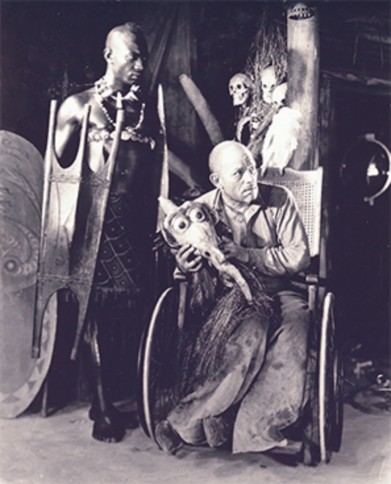
Lon Chaney with mask by Mortensen in still from “West of Zanzibar” 1926
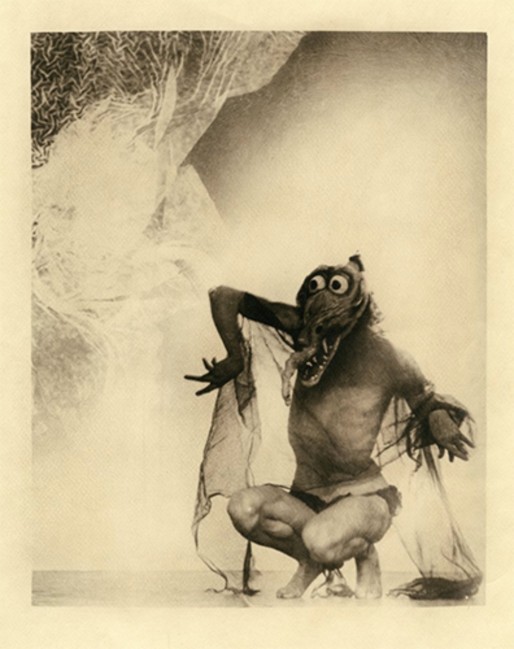
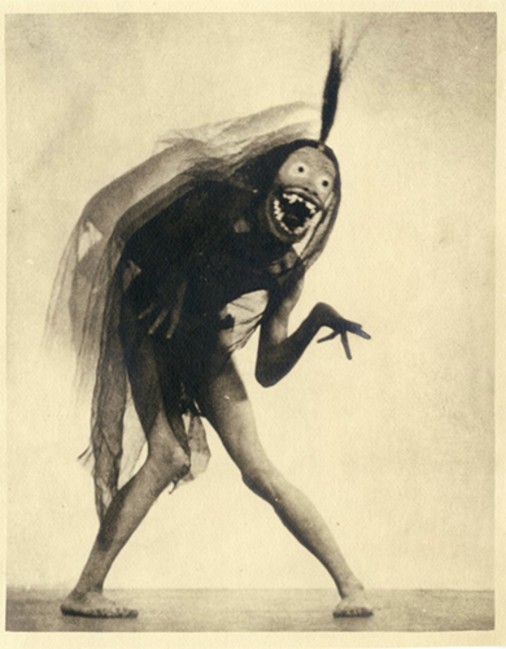
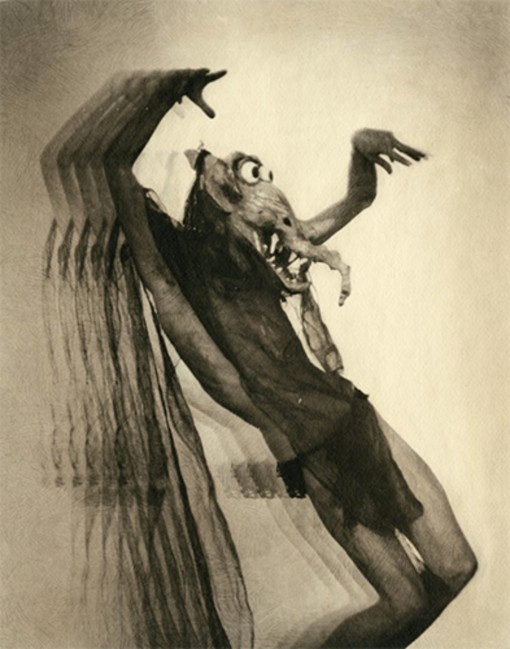
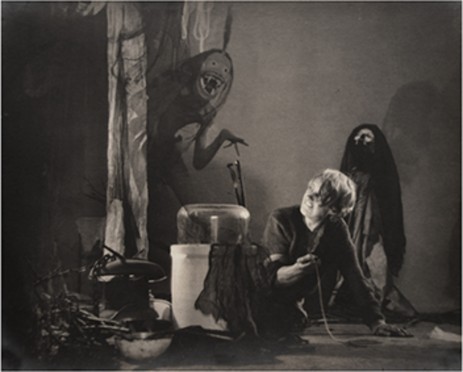
Artworks by Mortensen using resources of Westcoco. Many other examples exist.
Also 1924
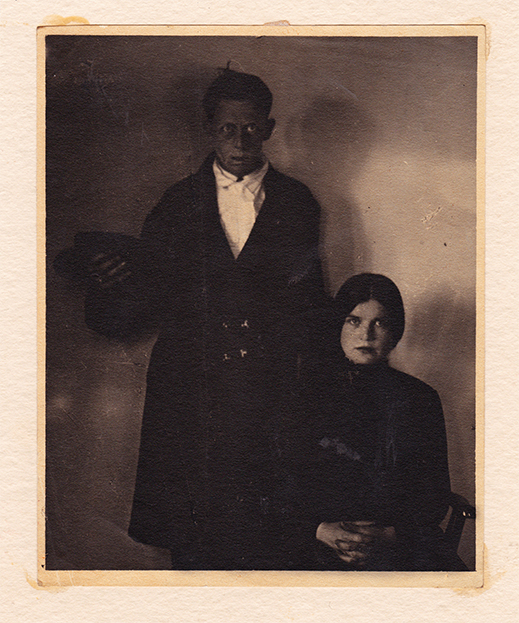
Mortensen married Courtney Finch Crawford (b. 1902) on May 13 in Hollywood.
Crawford's profession is listed as librarian in the Los Angeles City Directory for 1924.*
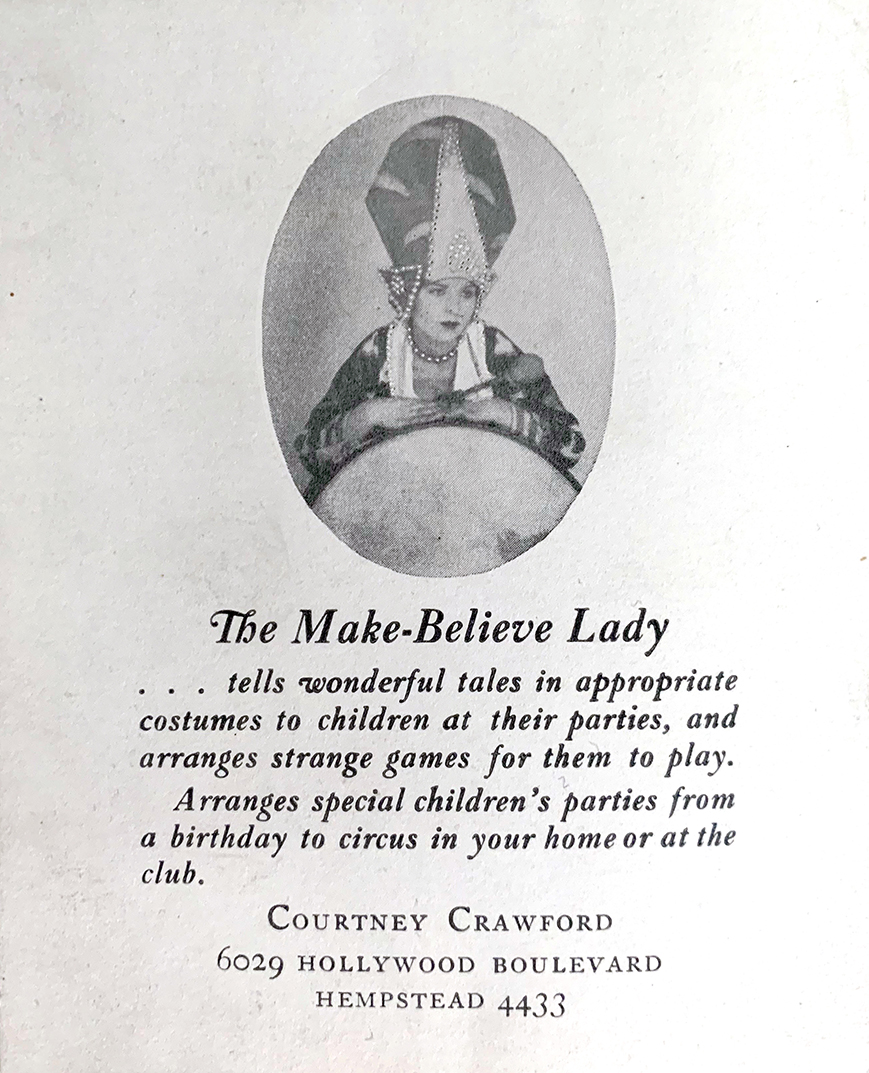


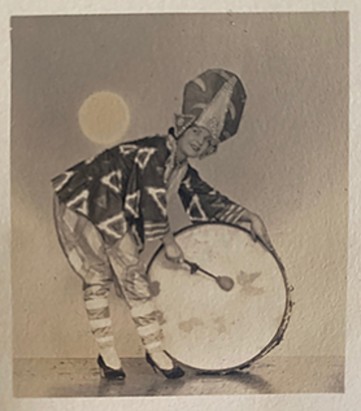
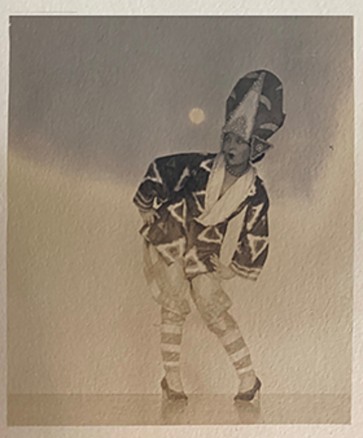
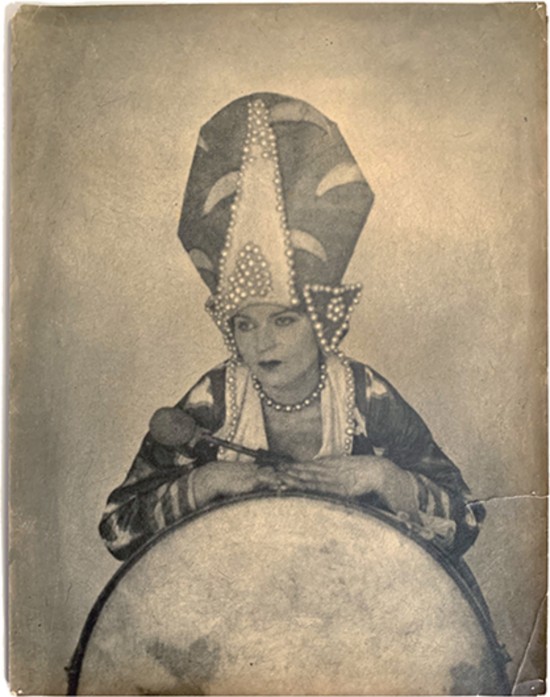
Courtney Crawford was a librarian who morphed into a performance artist “The Make believe Lady” who would go to parties for adults or children and bring her drum, tell strange stories, sing strange songs.
These are the only known images of the make believe lady, private collection, Brooklyn.
Courtney Crawford would become Mortensen’s first true muse, posing for thousands of photographs, and was among the first photographic artist / model collaboration.
“Sometime in 1923, only a year and a half after he moved from Utah to Hollywood and amidst the rising of his own star as a highly sought after Hollywood still photographer, set decorator and mask maker, William Mortensen met a mild mannered librarian named Courtney Finch Crawford, who was an aspiring actress from Texas. Courtney Crawford was also one of America’s earliest avant garde performance artists known as “The Make Believe Lady”, who would rent herself out in her original costume with her drum to adult or children’s parties, sing strange songs and tell strange stories. The only known surviving records are the following photographs. “
Mortensen obsessively made thousands of photographs of Courtney in the ensuring years, and they married in 1924. the vast majority of these photographs he destroyed in 1929 when they divorced.. however during those six years, the pair collaborated on several photographic series together, here are surviving images of three of them that are in my collection…
One of the most engaging aspect of the artist / model dynamic is the question of who is in control of the creative act.. By the very nature of authorship, it’s assumed in most instances that the artist is the primary director of the photograph, wherein he is in control of all the aspects, the choice of model, the costume, the art direction, lighting, and so on.. But in this instance of a true artist / muse relationship, the muse herself is as much a participant in the artistic direction the art takes. As a result of the intimacy the artist and model share in their lives, the intimacy is able to be perpetuated in the photographic session, resulting in stunningly beautiful portrait which capture what Mortensen later referred to in an essay called “The academic Nude”, I quote..
“The painter, for example, plans an elaborate allegorical
masterpiece, and devotes much time to research and preliminary sketches. After the completion of the magnum opus, or during the rest periods, he may paint his model relaxing amid the familiar clutter of the studio. And, as it often happens, the ambitious masterpiece is quickly (and fortunately) forgotten, while the tentative studies and the friendly, unpretentious picture of the model in repose are much esteemed—even by the public for whose eye they were not intended.
Much the same thing happens to the photographer. He spends time, thought. money, a huge effort and a vast number of exposures in trying to produce a picture. After the presumed pictorial climax is achieved, with the photographer in a state of incipient collapse, he devotes his one remaining exposure to a shot of the weary and relaxed model. Too often for mere co- incidence, these simple, almost candid shots, with lighting accidental and arrangement casual, prove to be the only worth- while result of the day's work. “
-excerpt from"William Mortensen and the Make Believe Lady"
October 2019 lecture at "Nightfall", Greenwood Cemetery Brooklyn NY

Courtney Crawford as Morgan Le Fey circa 1926 - 1928
1925
Mortensen worked for Hollywood director Ferdinand Pinney Earle, designing sets and costumes for movie "The Lover's Oath". *
This film, based on The Rubaiyat of Omar Khayyam, starred Ramon Novarro and Kathleen Key.
Mortensen is vague about the date of this project and refers to the film by the title "The Rubaiyat".
This is now a lost film, only a few minutes are known to exist.
Film stills from "The Lover's Oath" in the collection of the American Film Institute bear the date 1923, further adding to the confusion. A contemporary review indisputably placed the film's release date in 1925.*
Mortensen's photograph titled The Moving Finger, reproduced in The Blue and Gold (1926), shows Ramon Novarro in a scene from The Lover's Oath.*
Photographs in Mortensen's undated, handmade book The Rubaiyat of Omar Khayyam do not seem to be taken on the movie set. *
Mortensen made his first art book of photographs “The Rubaiyat of Omar Khayyam”
FULL SERIES is viewable here
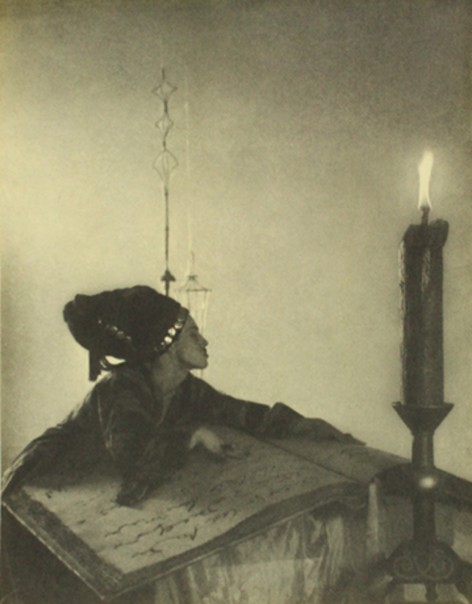
William Mortensen "The
Moving Finger Writes" circa 1925
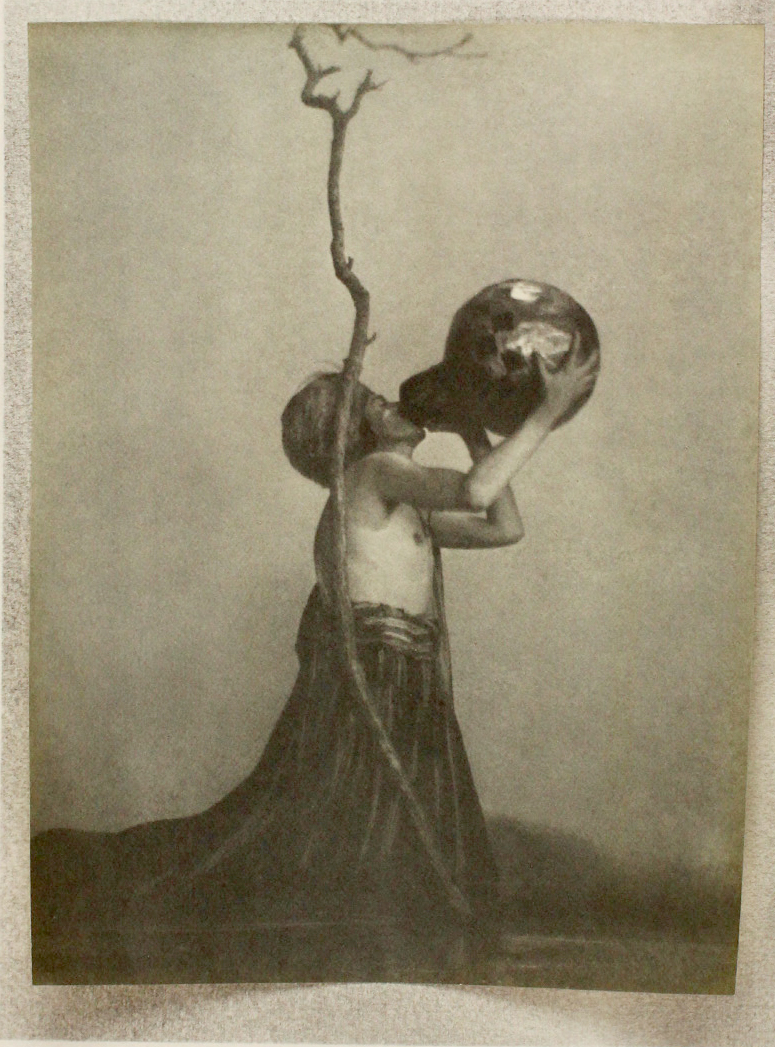
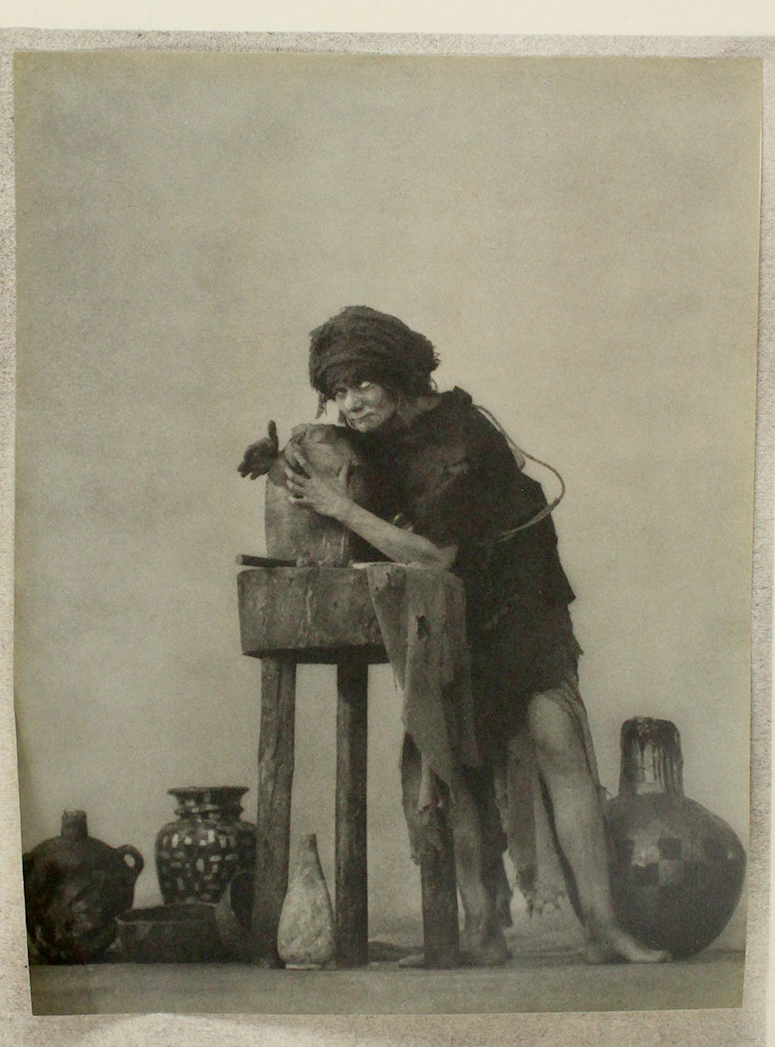
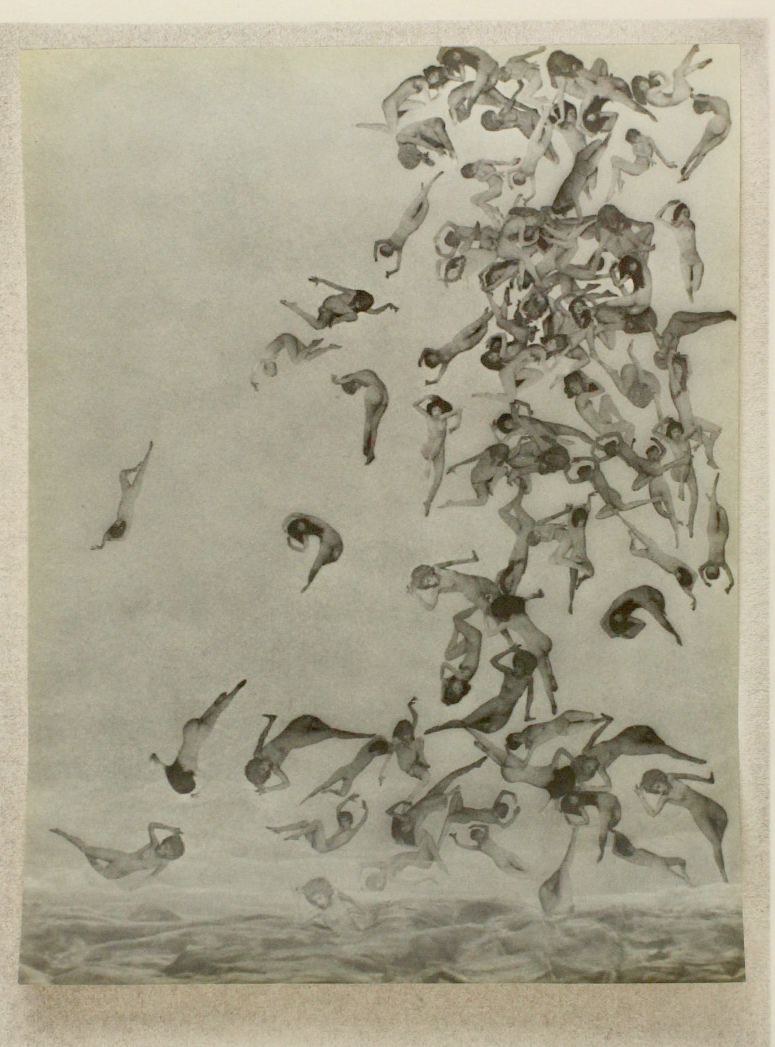
Extracted from Selected Quatrains from
The Rubaiyat of Omar Khayyam with
Camera Projections.

















Based on his work with Ferdinand
Pinney Earle. Through research we
have been Abe to reconstruct the series,
while the film “A Lover’s Oath” for
which we think Mortensen painted
backdrops (this film was one of the first
to purportedly use extensive rotoscoping
as a special effect) is now a lost film,
only a few minutes have survived.
William Mortensen's photograph "Glass" was reproduced in Photograms of the Year.
This is the earliest known example of Mortensen's work in a photographic journal.*
Mortensen's models came from the Los Angeles dancing studios of Theodore Kosloff, Marion Morgan, and Ruth St. Denis.
*
Mortensen's photograph "Allegresse" 1926, appeared in Katherine S. Dreier's book Shawn: The Dancer
Mortensen maintained a residence at 6029 Hollywood Boulevard, Los Angeles until 1931. *
Mortensen received little recognition for his work in the art world. Mortensen wrote that he 'began to try to crash the salons and the magazines. With fatal unanimity, my prints were returned".*
1926
Mortensen opened his first studio in Los Angeles.
6029 Hollywood Boulevard, also Courtney Crawford's address, from 1925 to 1931.*
Mortensen wrote, "My studio swarmed with midgets, acromegalic giants. fat ladies, pinheads, dog-faced boys, bearded women, and all the weird residue of defunct circuses. These strange folk fascinated me with their pictorial possibilities"*
Mortensen was hired as the still photographer for Cecil B. DeMille's new film The King of Kings.*
The most popular story of how Mortensen met Cecil B DeMille is that Mortensen was hired as a handyman for a mansion in Los Angeles and did not now the owner was for several weeks. Upon meeting the owner (DeMille) they hit it off famously and Mort talked his way onto the set of King of Kings as a still photographer, claiming he could make beautiful photographs shooting as the action occurred instead of re-staging the scenes. This would imply that his meeting with DeMille pre-dates his hiring at Westcoco, and it was upon DeMille recommendation he was given the whole floor.
Mortensen implied that he worked as early as 1922 on the films "Male and Female", "Adam's Rib", and "The Ten Commandments"*
Mortensen wrote in "The Command To Look" that DeMille hired him in 1925 and that he was commissioned to produce a limited edition album of photographs from the film The King of Kings. Mortensen wrote that DeMille wanted the album to contain photographs shot during the action of the film, not posed later, and that the album was to be titled 'The Pictorial Life of Jesus of Nazareth"*
Mortensen says he shot 400 dozen 3 1/4 x 4 1/4-inch negatives for the King of Kings project, and that he spent six years designing sets, costumes, and masks for DeMille.*
Mortensen's photographs are purportedly the first motion picture studio production shots made with a 35mm camera
And one source stated that he produced stills for DeMille's King Kong, starring Fay Wray) (SiwA, p. 21). Mortensen showed 4 photographs in 11 salons. *
During the 1920s, Mortensen worked on "A Pictorial History of Witchcraft and Demonology" and the "glorious girls of Hollywood" Mortensen joined Camera Pictorialists of Los Angeles.
"A Pictorial History of Witchcraft and Demonology" was a lost work until in 2014 Stephen Romano found one of the original images on eBay and contacted the seller. The seller had all 19 of the images from the series in his possession, and Romano acquired all of them, created a catalog
The works were discovered in the estate of occultist Hayward Carrington.
It is speculated that Mortensen saw the film “Haxen” Witchcraft through the ages” and was deeply influenced by the images., and thus began his fascination with the occult.
The series was exhibited at the Metro Show art fair January 2015 for the first time ever and given coverage n the New York Times. It was immediately acquired by the Museum of Everything in London. Two Further showings of the series were at Stephen Romano Gallery in a one person exhibition of Mortensen in October 2014 and at the Morbid Anatomy Museum in Brooklyn NY June - September 2015 . Fragments of the series were exhibited at The Museum of Old and New in Tasmania in 2017.
This series is among Mortensen’s most famous works. “A very fruitful field for grotesque art is afforded by the
manifestations of witchcraft and demonology. Fear, secrecy, and converse with evil powers, were characteristic elements of this mysterious cult which is as old as man. These elements are of the very substance of the grotesque . . . but little has been done with it by photographers. “
William Mortensen, Monsters & Madonnas (San Francisco: Camera Craft, 1936), commentary to Preparation for the Sabbot.
Mortensen also had friendships with occultist Hayward Carrington, Manley Hall and horror actor Lon Cheney and later Vincent Price.
A pictorial compendium of witchcraft, the Metro Show NYC 2014, Stephen Romano Gallery booth.
from New York Times, Jan. 23, 2014
"Stranger rituals are on view at Stephen Romano, captured in 19th-century spirit photographs by William Mumler and William Mortensen’s silver gelatin prints that make up “A Pictorial Compendium of Witchcraft” from the 1920s. Mortensen was a budding publicity photographer, but his shot of a young, nude Fay Wray (later known for her 1933 role in “King Kong”) practicing the black arts — on view here — got him blacklisted from Hollywood."
1927
Mortensen's 'Persian Prints, Scenes and Characters from Cecil B. DeMille's The King of Kings, illustrations from Dickens, History of Music, Illustrations from the Rubaiyat, Studies and Miscellaneous, Stage Stars, etc." were shown at The Camera Club of New York, September 1927. *
Mortensen showed 6 photographs in 23 salons.*
1928
Mortensen's photograph Salome was accepted in the London Salon, reproduced in American
Photography and American Annual of Photography.*
1929
Mortensen exhibited in the Fifth Salon Internacional, Zaragoza, Spain.
Mortensen showed 8 photographs in 21 salons *
1930
William Mortensen showed 7 photographs in 13 salons .*
1931
Mortensen moved to Laguna Beach.
Evidence about when (and why*) Mortensen moved to Laguna Beach is confusing and contradictory.
He stated only that 'the depression, the talkies, growing dissatisfaction and possibly a tardy arrival at maturity, all contributed to terminate my stay in Hollywood. So I renounced the world. the flesh and the Devil ...and sought a stern sequestered life in a small village on the shores of the Pacific' * Command to Look.*
A local newspaper (South Coast News 28 August 1931) reported in 1931 that Mortensen was opening a school in Laguna Beach and stated that the previous year he had been teaching in Hollywood.
The American Annual of Photography listed Mortensen's address in Hollywood in 1929, 1930. and 1931, and changed his address to Laguna Beach in 1932.
Myrdith Monaghan Mortensen's chronology placed his move in 1931.
George Dunham gave the year as 1930, but in his 1965 obituary for Mortensen wrote that it was 'a fine spring day in 1931' Dunham also wrote that Mortensen began teaching out of his home with just a few students. *
It is now believed that the troubles began for Mortensen in 1928 when “Motion Picture Magazine” published an article in it’s August edition about Mortensen which implied that he had an affair with Faye Wray when she was a minor.
In 1928 other trouble resurfaced with regard to Mortensen’s former charge, Fay Wray. In the six years that had passed since Vina took over her daughter Fay’s life, Wray had become a leading lady. She had appeared in eleven films and had just finished her twelfth, The Wedding March, directed by Eric Von Stroheim. She recounts that some weeks after completing the film she had married one of Hollywood’s most important screenwriters, John Monk Saunders. They were in New York City on their honeymoon when Vina sent a frantic cable to Saunders telling him to ignore “the story” (it was a phony) and the accompanying photographs of Fay (as they were composited). The “story” she was referring to had just been printed in a fan magazine that month (the name of the magazine is unknown but it would have been July or August, 1928).
* American Grotesque
Wray conveyed the humiliation and shame that she felt about the sensationalized and mis representative account of their trip from Utah, illustrated with two photographs—one of Wray and Mortensen standing next to his Harley Davidson, and one of the photographs shot by Mortensen of Wray draped in the notorious crepe de chine. Saunders confronted Wray, waving the magazine and telling her, repeatedly, that this would end her career and that Paramount would nullify her current contract. Upon returning from the honeymoon, a meeting took place with Wray, Saunders, Wray’s mother Vina, and the head of Paramount’s PR department. The meeting played out much like the earlier incident: Fay helplessly in tow, with Vina mercilessly
excoriating Mortensen.
Vina, Saunders and the PR man then concocted a document for Mortensen to sign. In her description of the incident, Wray doesn't’t specify what the statement contained, but it must have disavowed the trip, confessed that the photos were faked and stated that Wray and Mortensen had no previous relationship. Vina took the document to Mortensen to sign, which he did. The Paramount PR man leaned on the editor of the magazine, making sure that no other pictures would surface, which they didn’t. And the matter was ended. When Wray later had the opportunity read the document, she was mortified by it and felt that neither she nor Mortensen had done anything wrong. She called it a “fiction”; the story of their trip was true and the photographs were real. Wray was concerned about what effect all this had on Mortensen.71 Mortensen never commented publicly about the unfortunate scandal, but it was clearly a source of disillusionment. In The Command to Look he confides an alternate reason to the reader: times had changed in Hollywood and a combination of the Depression, a developing sense of personal discontent, and “a tardy arrival at maturity” all led to his decision to leave the city and relocate to Laguna Beach in 1931.
In his words, he “renounced the world of the flesh and the devil, tore up my yard of crepe de chine, and sought a stern sequestered life in a small village on the shores of the Pacific.”
In another account..Faye Wray’s mother is involved.
“ Wray was Mortensen’s first Hollywood subject and he served as her chaperon while she acclimated to studio culture (1921-24). Wray’s mother was responsible for the destruction of all glass plate negatives Mortensen took of Fay, and the subsequent censure of Mortensen by Paramount instigated by her resulted in his leaving Los Angeles to establish photography school in Laguna Beach. Mortensen destroyed the majority of his prints of Hollywood subjects at this time. “
https://profilesinhistory.com/flipbooks/Hollywood49/files/basic-html/page7.html
III. LAGUNA BEACH
1932
William Mortensen founded the Mortensen School of Photography,
1737 Coast Boulevard South, Laguna Beach, October 15.*
Mortensen's Salon of Photography - Laguna ;each, Calif.
Postcard showing "Mortensen's Salon of Photography, Laguna Beach, California,", undated*
Mortensen School drew an estimated 3000 students between 1932 and 1955.
Students at the school came from Iceland, Australia, England, Hawaii, and Canada, as well as from across the United States (Wisconsin, Arizona, New York, Louisiana, Oregon, Texas, Rhode Island, Mary-land, Pennsylvania, Nebraska, etc).*
Mortensen showed 7 photographs in 12 salons
Mortensen's photographs were exhibited at Boston YMC Union Camera Club.*
Published Pictorial Lighting
A reproduction of Mortensen's photograph Myrdith, 1931 appeared in the March issue of Camera Craft magazine, p. 106. The reviewer called it "one of the most charming feminine portraits"
This is the first mention of Mortensen in the pages of Camera Craft.
With it began an important. mutually beneficial relationship providing a forum for Mortensen's writings as well as advertising for his products, school, and books.*
The magazine also published his letters to the editors and news notes about his activities.*
1933
Married Myrdith Monaghan (1909-1981) on April 1 in Laguna Beach.
It was the second marriage for both. William Mortensen was 13 years older than the 23-year-old Myrdith.
Standard Certificate of Marriage, County of Orange, Santa Ana, California.*
Mortensen met George Dunham (1896-1976), who became his most important model as well as his collaborator, co-author, and business associate.*
Dunham was credited with having called Mortensen's attention to the Fresson color process*
Mortensen "admitted that he had no literary talent, that he could not have got to first base without the collaboration of George Dunham who did all the writing while he supplied the ideas and technical knowledge.'*
Mortensen's photographs were exhibited at the Brooklyn Institute of Arts and Sciences, January.
Mortensen exhibited 10 photographs in 34 salons.*
1934
Mortensen published Projection Control.
Showed 4 photographs in 14 salons.*
A series of articles by Mortensen and Ansel Adams in Camera Craft spotlighted the aesthetic debate between pictorialists and advocates of purist photography. The confrontation begins ..
Volume 40, no. 9 (September, 1933):*
"Wherein he assumes the editorship, is radically redesigned: a sparser, cleaner layout,
more “modernistic” in tone, is established. Aside from this, there is only one hint of what is to come—a brief notice that one member of the f.64 Group, Ansel Adams, is offering in “his new gallery at 166 Geary St., San Francisco,” a series of classes and “General lectures in which Mr. Adams will trace the development of photography with the idea of establishing an aesthetic rational [sic] as the basis for future progress.”
Yet shortly thereafter—and, unquestionably, at Young’s instigation— the battle is joined. Within the next few issues of Camera Craft, Young introduces his readership to the two principal combatants. One of these is the aforementioned Ansel Adams, at that time a comparative unknown. The other, already a photographer of international reputation, is William Mortensen".
-American grotesque
Mortensen’s books reached a large audience.
Most of them were serialized first in Camera Craft; during the course of any such serialization the magazine almost invariably sold out its press run, as proudly apologetic notes from the editor indicate. The book versions sold equally well, usually going into multiple printings and/or revised editions.
Many of the books were published under the imprint of the Camera Craft Publishing Co., and there is reason to believe that the financial survival of Camera Craft during this period was largely attributable to Mortensen’s writings.
This in turn suggests that the availability of Camera Craft’s editorial columns as a forum for the imagery and ideas of the f.64 Group also might have been due to Mortensen—that, in effect, he provided the staging ground on which their verbal and visual duels took place.
On the basis of these facts alone, Mortensen’s place in the contemporary history of photography would seem to be assured, his right to that place secure and inarguable.
When we add to that his eloquent, elegant and indefatigable championing of the pictorialist stance—under the constant fire of such “purist” big guns as Adams, Weston, Willard Van Dyke, Roi Partridge, John Paul Edwards and Nancy Newhall—in a controversial public debate which stretched over a decade, his absence from the history books reveals itself to be the consequence not of inadvertent oversight but of deliberate omission.
As such, it is a serious breach of the responsibilities and ethics of historianship.
The frequently proffered justification for Mortensen’s erasure is that purism was waxing and pictorialism on the wane during this period. That is true, but insufficient as an explanation—and considerably disingenuous as well.
In fact, though nominally pledged to the impartiality of scholarship, both the Gernsheims and the Newhalls were highly biased in their approach to photography’s history. They shared an intense attitudinal and aesthetic commitment to advocacy of the “straight/purist” stance; their distaste for any form of “manipulated” imagery was repeatedly made clear. (The Newhalls, in addition, were already becoming entangled in elaborate personal and professional relationships with members of the f.64 Group, particularly Weston and Adams.
To their discredit, they allowed their prejudices and allegiances to overrule their obligations to the discipline of historianship.
Mortensen must have seen it coming. As an isolated occurrence, he might have been able to discount Ansel Adams’s omission of his work—and, indeed, of all contemporary pictorialist work and most
earlier pictorialist achievement—from “The Pageant of Photography,” a large traveling exhibit which Adams curated in 1939–1940. After all, “Purism” as such was relatively new as a movement, and its historical roots had never yet been traced in exhibition form. Also, Adams was a practitioner, and from practitioners of a medium one expects credos and grinding axes, not overviews and eclecticism.
Adams’s rationale for this exclusion of the pictorialists was dispassionate in tone.11 However, Adams’s antipathy to Mortensen ran deep, with an extremely personal undercurrent. Briefly put, he wanted him dead, and said as much on several occasions. In a recently unearthed, previously unpublished letter to Mortensen—apparently intended as part of their debate, but not printed at the time—Adams waxed positively vitriolic, concluding that “How soon photography achieves the position of a great social and aesthetic instrument of expression depends on how soon you and your co-workers of shallow vision negotiate oblivion.”12 In 1937, replying to a letter from Edward Weston in which Weston notes, “Got a beautiful negative of a fresh corpse,” Adams in his autobiography proudly indicated that he wrote back, “It was swell to hear from you— and I look forward to the picture of the corpse. My only regret is that the identity of said corpse is not our Laguna Beach colleague [William Mortensen]. I am convinced there are several stages of decay.”
13 Years later, he would describe Mortensen as “the anti-Christ.”
Indeed, Adams’s vendetta pursued Mortensen even beyond the grave, and well into the terrain of outright censorship and blackmail. In correspondence with this author, Therese Thau Heyman, Senior Curator of Prints and Photographs at the Oakland Museum in California, confirmed that in December of 1980 Adams—then at the height of his fame and financial success—had demanded that a small Mortensen exhibit
scheduled to run concurrently with Adams’s traveling retrospective at the Oakland Museum be closed to the public during his opening; otherwise he would withdraw his own exhibit. “Ansel Adams had his own list of ‘enemies,’” wrote Heyman, “and Mortensen was still there and not to be removed by time and his own very evident successes.”
To this day, William Mortensen is known as “the anti-christ of photography”
A hybrid description in part from the monkey Adams gave him as well as for the dark and occult imagery he produced.
Anton Lavey also in part dedicated "The Satanic Bible" to Mortensen,
Although the two never met and Mortensen was purportedly a of Christian scientist.
1935
Mortensen conducted his first experiments with Metal-Krome and pigment printing.*
WILLIAM MORTENSEN: Myrdith Monaghan Mortensen, 1930s.
William Mortensen's photograph "Sojin" was shown in Fine Arts Building, New York City, in the Royal Photo-graphic Society exhibition, as part of a group of "outstanding American pictorialists.*
Mortensen's photograph "A Study in Red Chalk" was exhibited in Leica Exhibition at the Hotel Philadelphia, Philadelphia. *
Mortensen exhibited 3 photographs in 6 salons.*
1936
William Mortensen published Monsters & Madonnas: A Book of Methods (San Francisco: Camera Craft).
This book originally sold for $4.00. In 1997, a copy could sell for between $300 to $600.
Mortensen began selling photographic accessories such as dodging boards in Camera Craft magazine *
William Mortensen was invited to write a general manual of photography for Simon & Schuster.
He at first accepted the offer, but later realized that what he had written was not what the publisher was expecting. He wrote to Simon & Schuster, 'since I last corresponded with you I have read Wake Up and Live and also Dale Carnegie's book. It seemed to me that this 'Formula for Success' formula was a sound and sure-fire way of putting over what you have to say. Hence—The Command to Look'
Exhibited 6 photographs in the Morgan Camera Shop Photo Exhibition at the Hollywood Plaza Hotel, April.
Small card with instructions to customers from Mortensen Studio, Laguna Beach. California, n.d.
MORTENSEN STUDIO LAGUNA BEACH, CALIFORNIA
These are your proofs. Please make your selection solely on the basis of EXPRESSION. If you like the expression, a satisfactory PORTRAIT can be made from any of these. I have indicated my personal choice. These are raw proofs and give no idea of the finish-ed processed print. All proofs must be returned before order is completed.
WILLIAM MORTENSEN
1937
Mortensen wrote, "Twenty years ago I was possibly the worst photographer on the
North American continent." in The Command To Look.*
William Mortensen was not included in Beaumont Newhall's landmark history of photography catalog Photography 1839-1937 (Museum of Modern Art).*
Mortensen's Salon and School of Photography moved to 903 S. Coast Boulevard, the corner of Coast and Thalia, Laguna Beach, July.*
Some time earlier, Mortensen's School had moved to 425 South Coast Boulevard from its original location. The School's last location was 903 Coast Boulevard.*
Mortensen's empire at its height included a school, a portrait studio, a lab on Laguna Canyon Road, and his home.*
An advertisement also lists a San Francisco address (215 Market Street) in addition to the new Laguna Beach address.
It is not known if Mortensen actually opened a branch of his school in San Francisco or if he was listing a San Francisco address at which occasional lectures and programs took place.
The first advertisements for the Mortensen School of Photography appeared in Camera Craft magazine. The December issue stated that 600 students had attended.
1938
Mortensen published Print Finishing (San Francisco: Camera Craft).
Began selling texture matrixes sold through the School and through advertisements in Camera Craft magazine.*
Mortensen had a solo exhibition of bromoil and Metal-Krome photographs at the Cincinnati Camera Club, July.*
Had a solo exhibition in the Stendahl Art Galleries, Los Angeles. and showed 2 photographs in 5 salons. *
Mentioned in Wick Evans's article "The Picture Is the Thing" in the May issue of Popular Photography.
*
1939
Mortensen showed 2 photographs in 4 salons. *
Began selling his abrasion tone kit, sold through Oxford Products Company and Camera Craft magazine.
Offered Sunday seminars at the School for $5.00 per person.
1940
Ansel Adams curated The Pageant of Photography exhibition on the history of photography for the Golden Gate International Exposition, Palace of Fine Arts, Treasure Island [San Francisco]. Although Adams chose not to include Mortensen's work, Mortensen's influence nevertheless was felt at the Exposition. He was on the committee in charge of an exhibition of "Pictorial Photography" displayed in the California Building. Other members of the committee included Edward Weston and Fred Archer.*
Mortensen published "Mortensen on the Negative" (New York: Simon & Schuster) and "Outdoor Portraiture" (San Francisco: Camera Craft).
A William Mortensen photograph was used in an Eastman Kodak advertisement in Camera Craft (September 1940), back cover.
Mortensen's photographs were exhibited at Boston YMC Union Camera Club (March) and at the Boston Camera Club.
Mortensen and Edward Weston were both included in the Western Amateur Camera Conclave, Oakland, July 25-27.
1941-1945
Mortensen published Flash in Modern Photography (San Francisco: Camera Craft).
During this year, Mortensen wrote "The Camera Corner," a series of weekly photography columns for the Los Angeles Times, Home Magazine Section aimed at the "amateur camera fan."
He covered subjects such as how to buy a camera, correct focusing, and proper exposure times.*
Mortensen opened an extension school at 525 W. Sixth Street in Los Angeles.
Camera Craft magazine ceased publication with its March/April 1942 issue.*
Mortensen had a solo exhibition of 44 photographs in the Section of Photography, Division of Graphic Arts, Department of Engineering and Industries, United States National Museum (then a bureau of the Smithsonian Institution), March.*
Mortensen gave 7 of the pigment prints to the museum.*
1949
Mortensen received Hood Award from the Royal Photographic Society for his Metal-Krome photograph "Pouring Milk"
The only American to ever receive this honor*
1950
Mortensen exhibited in the First International Colour Print Exhibition at The Camera Club, London, November.*
1951
Mortensen was receiving royalties on eight books from Camera Craft.
In the agreement with Camera Craft, George Dunham received one-third of the total royalties.*
1953
William Mortensen became a member of the Photographic Society of America through 1955 and possibly to the end of 1958.*
1954
Mortensen published small booklets in series, Mortensen System (Newport Beach, California Jay Curtis Publications).
Female Figure, The Paper Negative, The Textures Screen, and Know Your Negative
1956
Mortensen and lay Curtis Publications (publisher of his book The Female Figure) were charged by United States Post Office with distributing 'lewd, lascivious and obscene" materials through the mail.
Mortensen commented,
"Honest artists are made to suffer for the sins of a few pipsqueak pornographers... the official mind seems to follow this highly questionable line of reasoning: some nudes are vile. This is a nude. Therefore, this is vile."
To show its support for William Mortensen, the Laguna Beach Art Gallery held a solo exhibition of his work in March.
1959
Camera Craft was sold to Ziff-Davis Publishing Co. along with the remaining stock of William Mortensen's books.
1961
At about the time when Ziff-Davis was paying royalties to Mortensen on only one book,
it sold its book publishing business to A. S. Barnes along with the remaining stock of Mortensen's books.
1962
William Mortensen signed contract with Howard Lucy to market Texture Effects Screens, later called Texturefects Visual Texturing film.
According to Myrdith, Mortensen turned over most of his negatives. photographs, paper negatives, "mother" screens, manuscripts, and publication files when he agreed to let Lucy promote his texture screens.
At a later date. Lucy and Jacques de Langre became business associates in order to sell Mortensen screens. No original contract is extant in the Mortensen archive.
1963-65
William Mortensen devoted himself to painting rather than photography.
Color motion picture on Mortensen in production, Soltys Productions, Hollywood.
Story by Earl Stone and George Dunham.
Directed and photographed by Richard J. Soltys. Narrated by Vincent Price.
This film includes footage showing Mortensen and George Dunham in the Laguna Beach school with students and models, and a short interview with actress Jeanne Crain who had modeled for Mortensen.
Sally Reeve writing in 'William Mortensen Paintings at New Fine Arts Gallery," Laguna Beach Post (19 September 1961 mentions that a 'thirty minute movie is in the making."
Viewable here ➔. https://www.youtube.com/watch?v=I-qRzRiGYwQ
1965
William Mortensen died in Laguna Beach of leukemia, August 12 1965.
He was buried in Fairhaven Memorial Park, Santa Ana, California.
Gravestone, Fairhaven Memorial Park, Santa Ana, California. Photograph by Larry Lytle. 1997
At the time of his death. William Mortensen was still receiving royalties on one book "How to Pose the Model".
IV. Post Post-Mortem
1967
Jacques de Langre published new editions of Monsters & Madonnas and The Command to Look using Mortensen's original screens and photographs.
1970
Photographic Society of America acquired collection of photographs by Mortensen.
1979
Deborah Irmas curates "The Photographic Magic of William Mortensen"
2014
William Mortensen's series "A Pictorial Compendium of Witchcraft and Demonology"
is exhibited for the first time ever at the Metro Show Art Fair in New York
Courtesy Stephen Romano Gallery, Brooklyn.
from New York Times, Jan. 23, 2014
"Stranger rituals are on view at Stephen Romano, captured in 19th-century spirit photographs by William Mumler and William Mortensen’s silver gelatin prints that make up “A Pictorial Compendium of Witchcraft” from the 1920s. Mortensen was a budding publicity photographer, but his shot of a young, nude Fay Wray (later known for her 1933 role in “King Kong”) practicing the black arts — on view here — got him blacklisted from Hollywood."
William Mortensen A Pictorial Compendium of Witchcraft
with writings by A.D. Coleman, Larry Lytle and Tom Patterson
published by stephen romano gallery
"American Grotesque The Life and Art of William Mortensen" is published by Feral House
American Grotesque is a lavish retrospective of grotesque, occult, and erotic images by the forgotten Hollywood photographer William Mortensen (1897–1965), an innovative pictorialist visionary whom Ansel Adams called the "Antichrist" and to whom Anton LaVey dedicated The Satanic Bible.
Mortensen's countless technical innovations and inspired use of special effects prefigures the development of digital manipulation and Photoshop. Includes a gallery of more than one hundred striking photographs in duotone and color, many of them previously unseen, and accompanying essays by Mortensen and others on his life, work, techniques, and influence.
"William Mortensen: American Grotesque"
Stephen Romano Gallery, Brooklyn New York
October 15 - December 31 2014
Exhibition review in Hyperallergic by Claire Voon
2015
Stephen Romano with artist Joe Coleman at The Morbid Anatomy Museum 2015
William Mortensen's "A Pictorial Compendium of Witchcraft and Demonology"
is presented at the Morbid Anatomy Museum in the exhibition "Opus Hypnagogia"
Curated by Stephen Romano Gallery
2018
William Mortensen is in the exhibition "Invisible House" curated by Brenden Walls for the Dark Mofo Festival in Hobart, Tasmania.
Mortensen's inclusion consists of a full room of his works at the Salamanca Art Center.
The exhibition received 6000 plus visitors over 10 days.
2019
"William Mortensen's Cellulid Babylon"
Presented by Stephen Romano Gallery
March 9 & 10, 2019, Sheraton Central Park / Times Square New York
"William Mortensen's WITCHES" at Buckland Museum of Witchcraft and Magick, Cleveland
Curated by Stephen Romano Gallery
William Mortensen WITCHES" exhibition catalog
PDF available
2020
"William Mortensen's WITCHES" at SCOPE Art Fair New York
Presented by Stephen Romano Gallery
2022
WHM CXXV
WILLIAM MORTENSEN AT 125 - A MULTI-VENUE CELEBRATION OF THE 125TH BIRTHDAY OF AMERICA'S GREATEST VISIONARY PHOTOGRAPHIC ARTIST.
www.whmcxxv.com
www.whmcxxv.net
Venues paying tribute:
Heritage Museum of Orange County,
Santa Ana CA, will mount an ambitious installation of original works by William Mortensen in both the Maag Farmhouse and the historic Kellogg House. The exhibitions are curated by Annabella Pritchard, and exhibitions are designed by Jamie Hiber, Daniel Cooper, Jessica Bell, Alex Gonzalez and Eli Aguilar.
William Mortensen's final resting place is also in Santa Ana.
January 27 through February 2022, opening January 28 2022
The Buckland Museum of Witchcraft and Magick
will mount an exhibition of original works curated by museum director Steven Intermill. This is the second exhibition of Mortensen's works the museum has undertaken.
January 27 through April 15 2022
The Gallery of Everything
in London will present the series "A Pictorial Compendium of Witchcraft and Demonology". The Museum of Everything has custodianship of one of the most in depth collections of the works of William Mortensen.
January 27 - March 1 2022
The Museum of Fine Arts, Houston
will highlight online their recent acquisition of the William Mortensen handmade book "The King of Kings" which was commissioned by director Cecil B. DeMille.
Currently on view.
The Laguna Art Museum
presented on William Mortensen's birthday a panel discussion moderated by Stephen Romano featuring Deborah Irmas, Michael Moynihan, Brian Chidester and Matthew Rolston. William Mortensen is also included in the museum's current exhibition "Sky Space Time Change" through April 25th 2022.
Stephen Romano Gallery
in Brooklyn presents the works of William Mortensen,
custodian of the largest and most comprehensive collection of the artis's works..
.. to be continued.
return to williammortensen.com
